
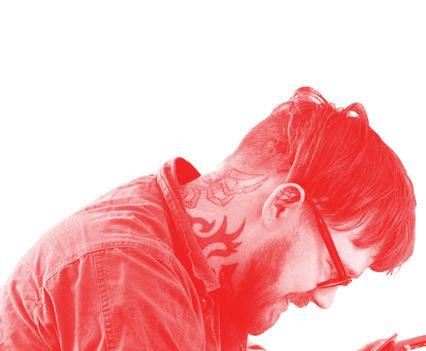









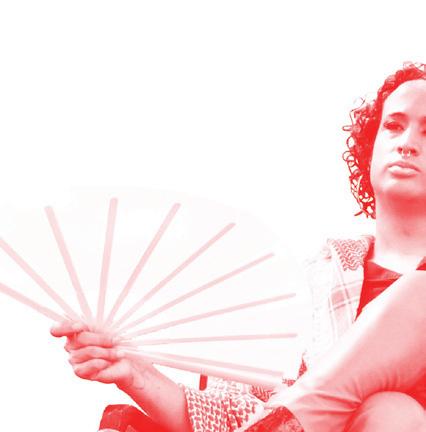


















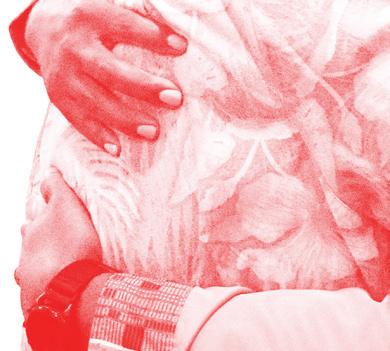


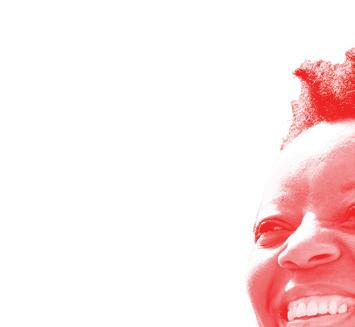


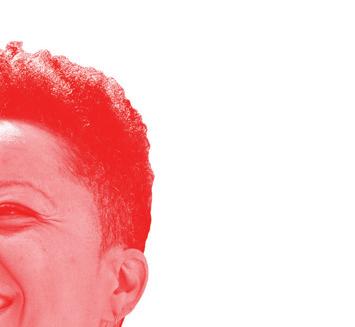









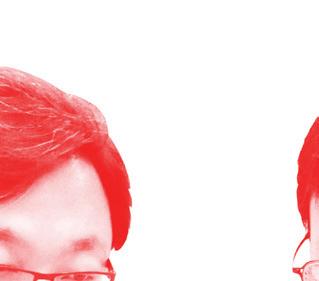


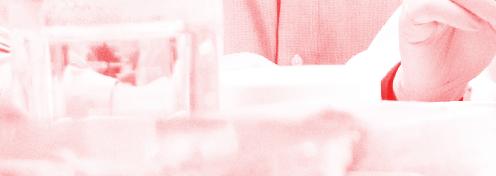







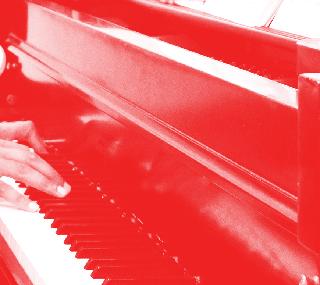




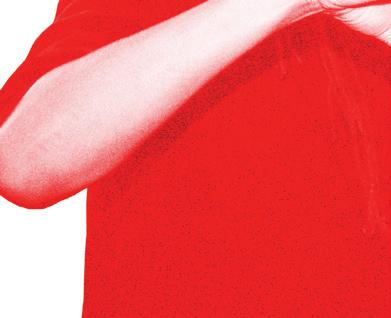


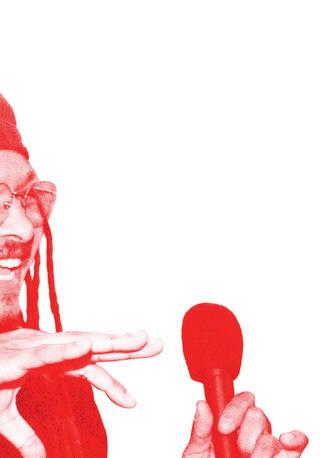







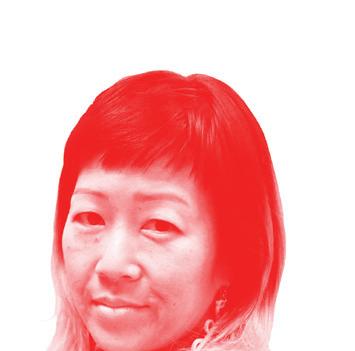
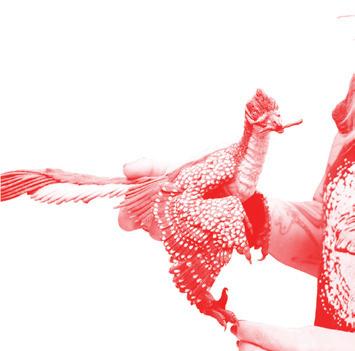









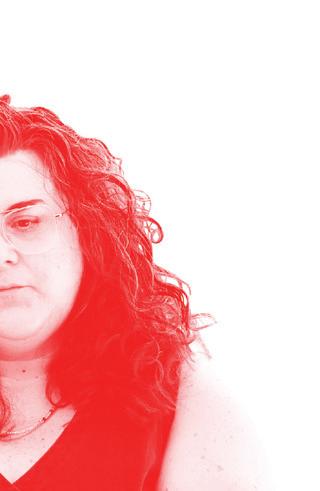


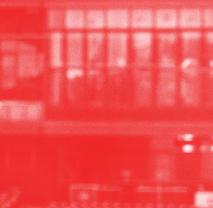








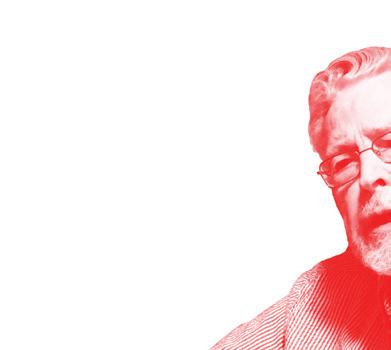


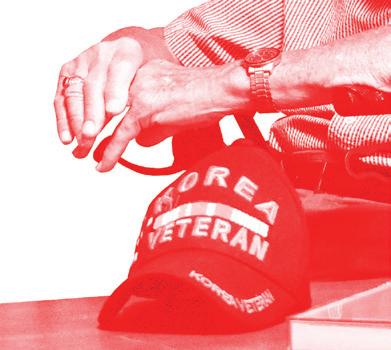









































































































04 Intro | Ludwig & Williamson Resiliency and joy
06 The Movement Architect | Caporale Carlos Fernandez brings together disparate factions in the fight for racial and economic justice
08 The Replicator | Montoro Janice Lim makes the fake stuff that helps Field Museum exhibits feel more real.
10 The Life of the Party | Triche Lil M.U. reps Chicago juke with the boisterous breakout hit “Top of Cars.”
12 The Tradition Keeper | McFadden Henry Carlson keeps Chicago’s Swedish heritage alive.
13 The Server | Sula Justin E. ArnettGraham uses his experience in the hospitality industry to advocate for workers.
14 The Striptease Savant | Renken Eva la Feva nurtures Chicago’s burlesque scene at the Newport Theater through “collaboration instead of competition.”
15 The Justice Championing Pastor–Professor | Brown Dr. Rev. Luther Young starts conversations and advocates for inclusivity of LGBTQ+ people in the Black church.
18 The Artistic Scientist | Ludwig Bozhi Tian brings a creative imagination to the discipline of bioelectronics.
20 The Tattoo Evangelist | Caporale Kyle Butler forges connection through creativity and touch.
22 The full-spectrum doula | Ludwig Kate Palmer provides compassionate, accessible care in a post-Roe world.
24 The Musical Fabulist | Reid Dominick Alesia brings fantasy and music to the stage.
26 The Community Builder | Mulcahy Nat Palmer centers people in her abolitionist organizing.
27 The Baseball Heir | Galil Night Train Veeck wants to keep baseball affordable and fun.
30 The Arts Visionary | Cardoza Tempestt Hazel helps preserve the cultural stories of the midwest.
32 Shows of Note Previews of concerts including Natural Information Society, Pamela Z, and Algernon Cadwallader
34 Gossip Wolf | Galil Arthur Banks of Jugrnaut passes away, rapper OkDeazy headlines a monster show at Subterranean, and more.



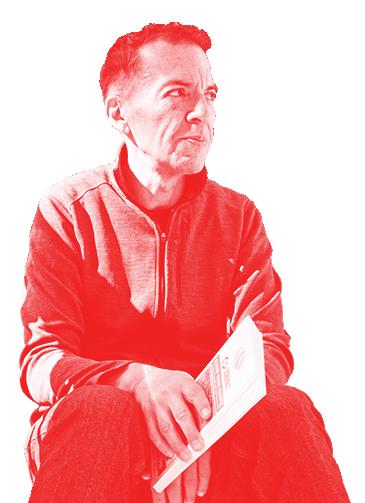




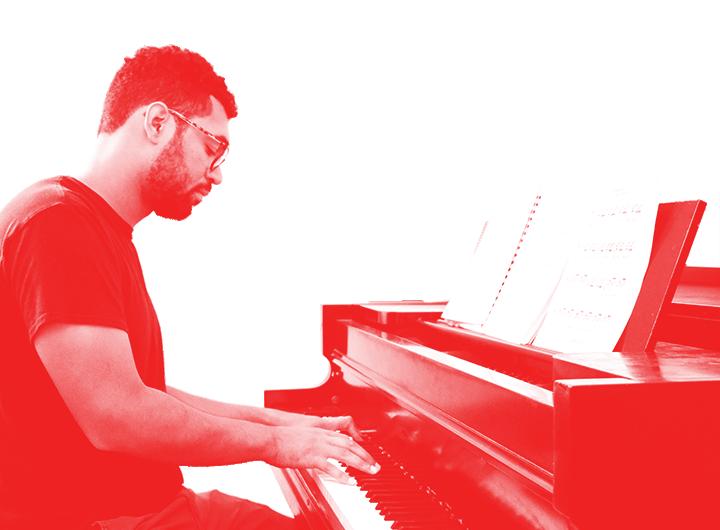
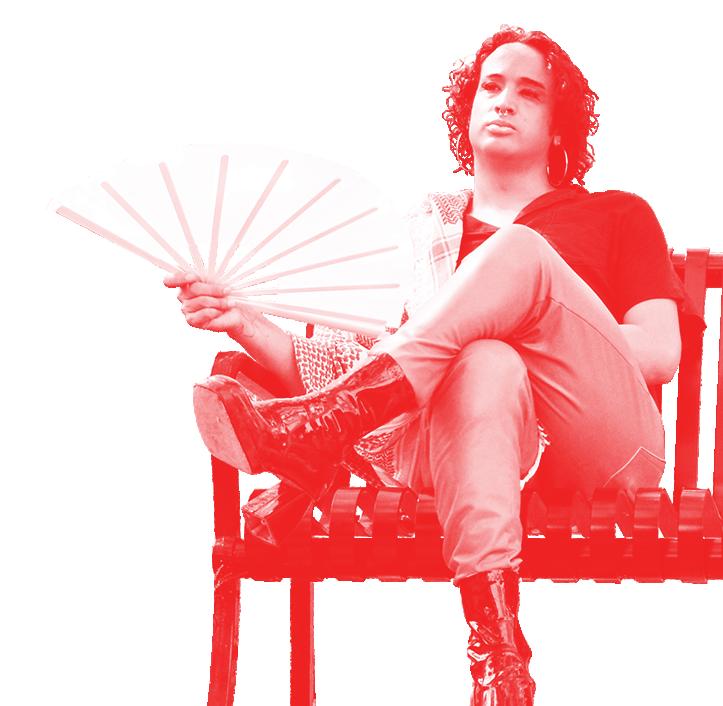
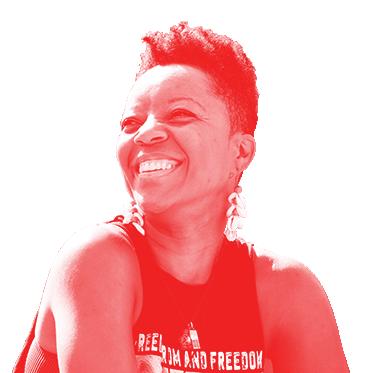
INTERIM PUBLISHER ROB CROCKER
CHIEF OF STAFF ELLEN KAULIG
ASSISTANT MANAGING EDITOR
SAVANNAH RAY HUGUELEY
PRODUCTION MANAGER AND STAFF
PHOTOGRAPHER KIRK WILLIAMSON
SENIOR GRAPHIC DESIGNER AMBER HUFF
GRAPHIC DESIGNER AND PHOTO RESEARCHER SHIRA
FRIEDMAN-PARKS


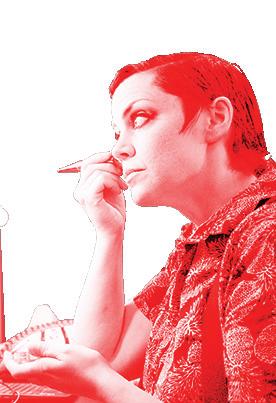
THEATER AND DANCE EDITOR KERRY REID
MUSIC EDITOR PHILIP MONTORO
CULTURE EDITOR: FILM, MEDIA, FOOD AND DRINK TARYN MCFADDEN
CULTURE EDITOR: ART, ARCHITECTURE, BOOKS KERRY CARDOZA
NEWS EDITOR SHAWN MULCAHY
PROJECTS EDITOR JAMIE LUDWIG
DIGITAL EDITOR TYRA NICOLE TRICHE
SENIOR WRITERS LEOR GALIL, MIKE SULA
FEATURES WRITER KATIE PROUT
SOCIAL JUSTICE REPORTER DEVYN-MARSHALL BROWN (DMB)
STAFF WRITER MICCO CAPORALE
SOCIAL MEDIA ENGAGEMENT
ASSOCIATE CHARLI RENKEN
VICE PRESIDENT OF PEOPLE AND CULTURE ALIA GRAHAM
DEVELOPMENT MANAGER JOEY MANDEVILLE
DATA ASSOCIATE TATIANA PEREZ
MARKETING MANAGER MAJA STACHNIK
MARKETING ASSOCIATE MICHAEL THOMPSON
SALES REPRESENTATIVE WILL ROGERS
SALES REPRESENTATIVE KELLY BRAUN
SALES REPRESENTATIVE VANESSA FLEMING
ADVERTISING
ADS@CHICAGOREADER.COM, 312-392-2970
CREATE A CLASSIFIED AD LISTING AT CLASSIFIEDS.CHICAGOREADER.COM
DISTRIBUTION CONCERNS
DISTRIBUTIONISSUES@CHICAGOREADER.COM
READER INSTITUTE FOR COMMUNITY JOURNALISM, INC.



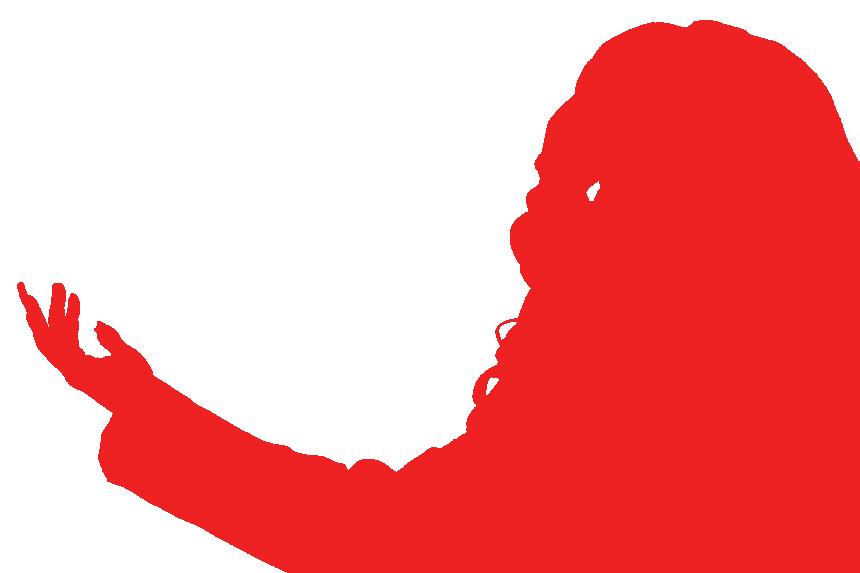












CHAIRPERSON EILEEN RHODES



















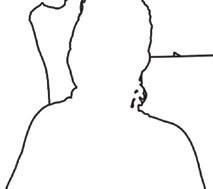





TREASURER TIMO MARTINEZ
SECRETARY TORRENCE GARDNER



DIRECTORS MONIQUE BRINKMAN-HILL, JULIETTE BUFORD, DANIEL DEVER, MATT DOUBLEDAY, JAKE MIKVA, ROBERT REITER, MARILYNN RUBIO, CHRISTINA CRAWFORD STEED









READER (ISSN 1096-6919) IS PUBLISHED WEEKLY

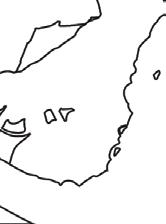












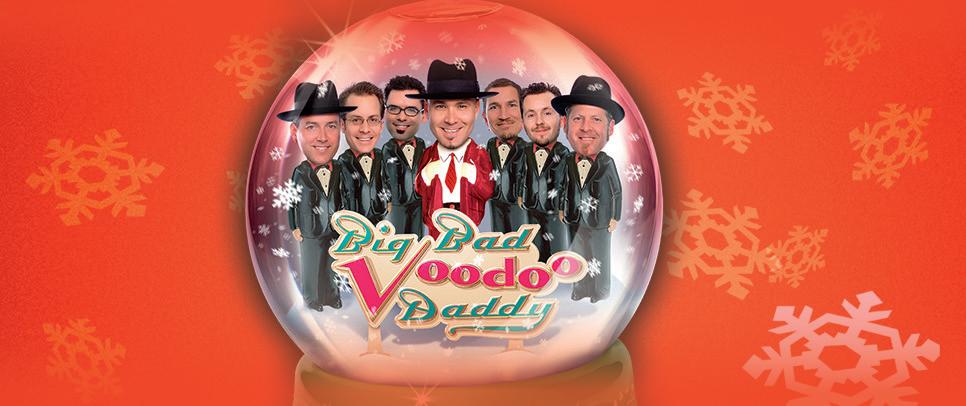





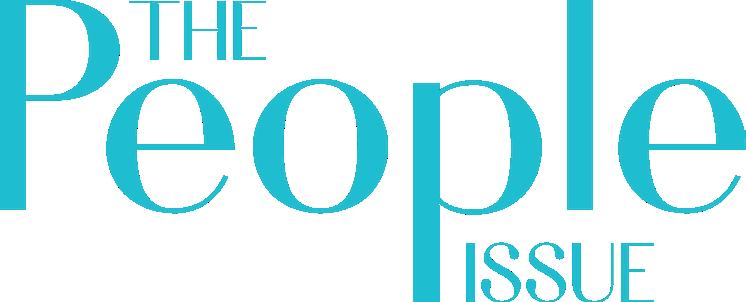
As the photographer for all 14 of this year’s honorees, I am in the special position of being the only Reader staffer to have actually met them all. The process has been fulfilling, and each subject touched me with a moment of joy.
ing. I know now there is a welcoming space in the hearts of man, and that’s a great comfort.
In July, when we started planning this year’s People Issue, we didn’t know if the would still be around for its publication. We were six months into a financial crisis, and amid steep staff and budget cuts, we were operating on a precarious basis—sending each issue to print without knowing whether it would be our last. Still, the prospect of running our annual collection of as-told-to interviews with everyday Chicagoans felt positive: Whatever life brings, we can count on the people in our city to have fascinating stories and perspectives.


As the issue began to take shape, the Reader was acquired by media company Noisy Creek. Finally, a er eight long months, we could breathe a sigh of relief knowing the paper would carry on with its integrity and editorial independence intact.
On September 8, just two weeks a er the acquisition was announced, the Department of Homeland Security launched Operation Midway Blitz, which has been sending masked ICE agents into Chicago and its surrounding suburbs, aggressively targeting individuals and disrupting communities under the stated purpose of arresting “criminal illegal aliens.” In response, ordinary Chicagoans have risen to the occasion and shown what makes the Windy City such a beautiful place.
So, this People Issue is dedicated to you: the people of Chicago. For having courage in this moment, for organizing and building community, and for standing up for family, friends, neighbors, and people you’ve never met. For starting tough but necessary conversations, and learning from those whose experiences and outlooks differ from your own. For engaging in peaceful resistance and for spreading joy through the darkness—whether through distributing whistle kits, supporting immigrant-owned businesses, or attending solidarity events as intimate as a basement benefit concert or as large as the 250,000-person-strong “No Kings Day” march downtown. And importantly, for bearing wit-

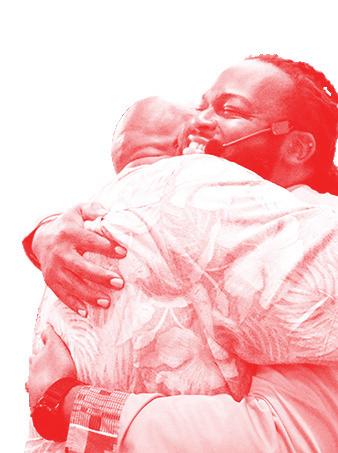
ness and telling the world about the injustices happening here. Not because it’s easy, but—as the growing number of people getting involved suggests—because right and wrong matter much more than party politics or superficial divisions. A similar spirit of purpose, hard work, and compassion pervades the 2025 People Issue. These 14 subjects hail from across the city and span more than seven decades in age. Despite their different histories, professions, and points of view, they’re united by a desire to uplift others and make society kinder and better, through actions such as advocating for hospitality workers like Justin E. Arnett-Graham (p. 13), supporting arts and writing projects from underrepresented groups like Tempestt Hazel (p. 30), or dropping hot dogs via helicopter over throngs of hungry baseball fans like Night Train Veeck (p. 27). Speaking about the bioelectronics research group he leads at the University of Chicago, chemistry professor Bozhi Tian (p. 18) says, “We want to design materials that benefit humanity. We want to do good things instead of going to the other side.”
Whether in these profiles or out in our neighborhoods, the takeaway is that anyone can play a part in making Chicago great. And our collective efforts can be a source of hope and pride while directly contradicting false narratives about the city and its inhabitants. “We are so much more than what people say we are,” says rising rapper Lil M.U. (p. 10).
As 2025 ends and a new year begins, there’s no way of knowing what’s coming down the pipeline, but a couple things are certain: The Reader is still standing, and as long as Chicagoans continue to extend those “big shoulders” to one another, the city will remain standing, too. As community organizer Nat Palmer (p. 26) says, “The people are winning, and we will always win.” v
—Jamie Ludwig, projects editor m jludwig@chicagoreader.com
Carlos Fernandez: Carlos toils on the front lines of ICE abduction efforts. It was reassuring to talk with someone who is immersed in the trauma and still able to keep a level head. His determination and positive worldview should serve as a field guide to us all.
Janice Lim: I deeply admire her focus and attention to detail in her fabrications. I feel very much the same way when I can immerse myself in a project from concept to reality—like my months of work on this issue.
Lil M.U.: Fans who heeded the social-media call to appear in her music video took turns showing the fuck out, each in some red item of apparel. Through it all, she remained humble and grounded.
Henry Carlson: As a gatherer of family stories, it was exhilarating to spend a morning with a nonagenarian who has lived in the same house since the Korean War. We sat and talked extensively, and I took a special photo of him so he could send it to his grandson.
Justin E. Arnett-Graham: Hospitality is in this dude’s blood. He joyfully went out of his way to offer me water, food, and genuine smiles at all times. It’s plain to see why he’s chosen the path he is on. Or did it choose him?
Eva la Feva: Eva was the first person photographed for this issue, and she kicked off the project on a high note. Drama! Costume! Sassssss! And she offered me the use of the Newport Theater’s photography studio for future shoots—an offer I plan to take her up on.
Dr. Rev. Luther Young: I fled the church years ago, owing to mainstream christianity’s persecution of LGBTQ+ people. Seeing his queer-affirming congregation was redeem-
Bozhi Tian: Bozhi’s arts background became clear during the shooting process. He suggested interesting angles and gave me the freedom to crawl behind different tables and other science lab furniture. It’s not o en that a subject is also the perfect photographer’s assistant!
Kyle Butler: He was quite friendly with his client, on whom he had worked in the past, and he discussed travelling to all corners on tattoo adventures. It’s nice to see someone so young who has clearly found their place in the world.
Kate Palmer: I wish more people would devote themselves to helping everyday folks navigate life and liberty in a climate that wants to curtail both.
Dominick Alesia: I was thrilled to discover that Dominick, like me, is Black and Sicilian. I have an uncle Dominick, who was named a er my great-grandfather Dominick. My time with Mr. Alesia felt like family.
Nat Palmer: I felt privileged to be welcomed into Nat’s place of peace, Columbus Park. She showed me all the cool nooks and shaded corners, and we discussed the ducks in the pond with a Zen level of disconnection.
Night Train Veeck: We were always a White Sox family, and the legend of his grandfather Bill looms large. Any guy that endeavors to break the record for the most hot dogs dropped from a helicopter is a gem. And spending a beautiful day on the field with a delightful professional is something few get to experience.
Tempestt Hazel: We were just two goo alls being goofy in the sun. She projects a muchappreciated sense of warmth and quirk. We discussed our unique names and how we have accepted the constant references they elicit: “Captain” for me and “Bledsoe” for her. v
—Kirk Williamson, sta photographer m kwilliamson@chicagoreader.com








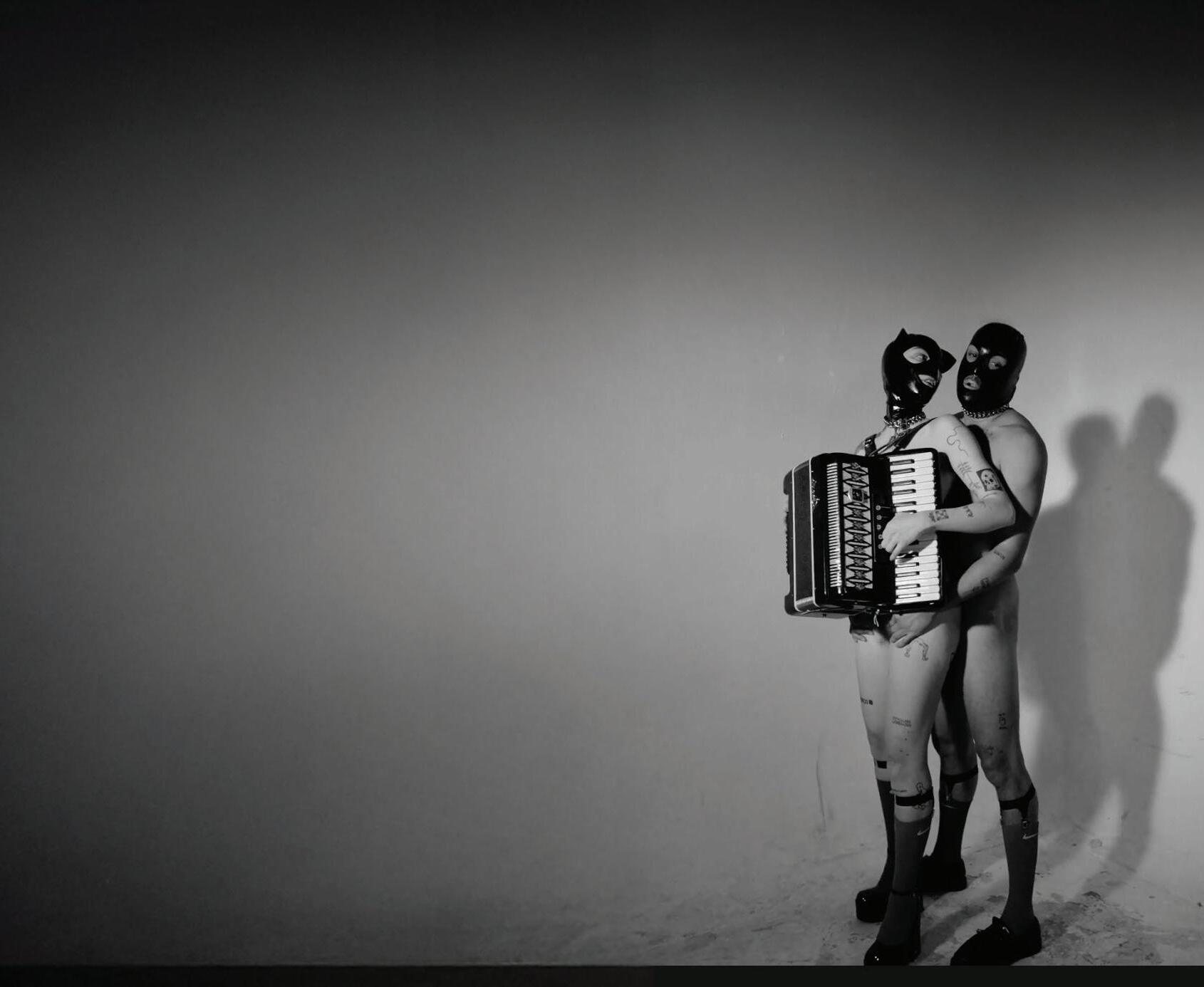





Carlos Fernandez has seen Chicago through many seasons of change. The 52-year-old organizer was raised in Pilsen as the oldest of four boys and the son of immigrants. He brings a firstborn’s assumption of responsibility and a Catholic’s sense of duty into all areas of his life. In 1987, after his family moved to Chicago Lawn, Hernandez started a slow political awakening that has continued to guide his life. The change forced him to commute to school daily across large swathes of the city. Navigating so many different kinds of people and neighborhoods made him begin to consider some of Chicago’s vast political and social problems.
Fernandez headed to the east coast for


college, spending a year each at Brown University and Hampshire College before dropping out. He’d become so involved in punk and activism he lost interest in his studies, though he eventually returned to school and graduated later in life. By the early 2000s, he decided to pursue a career in community organizing, which he’s continued doing for two decades. He’s worked on everything from union campaigns to environmental justice issues— always in a more grassroots capacity. Now based in West Elsdon, he’s the executive director of Grassroots Collaborative, a coalition of eight local groups working to unite disparate factions in fighting for livable wages, affordable housing, strong union jobs, and more.
Interview by MICCO CAPORALE
Photos by Kirk Williamson
My parents ran an auto junkyard and repair shop in Pilsen. I was brought up pretty Catholic. My parents—especially my mom— were very active in the church, and there was a strong sense of service. My mom was involved in a Catholic Worker youth organization that helped people form unions, fight for fair pay, and access food and other needs, like legal aid. My uncle became a deacon and volunteered in the United Farm Workers campaigns in the 70s. That wasn’t political to me; it’s just how I was raised.
Growing up, I didn’t realize how big Chicago is. I had a sense of its diversity, but I grew up in neighborhoods that were majority Mexican. Weekends were spent with cousins and summers in Mexico. I had this sort of insular universe until I was in high school and traveling around more on the bus and train. We moved from Pilsen to Chicago Lawn when I started at the De La Salle Institute, down the street from the Robert Taylor Homes. I took the bus almost every day from 61st and California to 35th and California, and then another bus down 35th to Michigan Avenue.
[In 1987], freshman year, I remember being in class when the news broke of Mayor [Harold] Washington’s death. It was a mixed class of Black, Latino, and white [students]. I didn’t understand why some students were cheering while others were extremely serious and quiet. It was clear that a lot of people, especially white people, but some Mexican and Latino people, had racist views towards the mayor because they had racist views towards Black people in Chicago. That moment taught me that racism doesn’t just exist on the fringes. It was right in that classroom, among 20 or 30 kids.
My social networks in high school and college made my mental map of Chicago bigger and more complicated, not just around race, [though] that’s number one on my sense of divisions in the city now. I went to the east coast for college for a couple of years. Like a lot of Mexican families at the time, I was the first on either side of my family to go to college.
I wasn’t focusing on much at school—I was more interested in going to concerts, lectures, bookstores. I’d pile in the car with friends and go to New York to see a show, or Connecticut, or Boston. If we could go to a protest or wheatpasting, we’d do that, too. I had an interest in literature and film, especially Latin American film, and that’s actually what I got my degree in about ten years later, at Columbia College: film studies. Art felt like a way to map the world, and I was doing what felt right and exciting. A er I dropped out of Hampshire, I came back to Chicago and worked in the family business until I decided to finish my degree around ’99 or 2000. I was still involved in the punk scene, but I became more of an activist. I had friends who started a punk band that sang in Spanish: Los Crudos. [Vocalist] Martin Sorrondeguy and I knew each other before they formed [in 1991]. He introduced me, not just to political punk bands, but also to Latin American folk music that was political, [including] Violeta Parra.

While I was finishing my bachelor’s, I was involved in small activist groups. There was a place called the Autonomous Zone. It was a bookstore (we called it an infoshop) that had all sorts of educational events, and my friends and I were involved. I was doing lots of things, but I felt really dissatisfied going to so many protests [where] the people there didn’t look like me or reflect the neighborhoods I grew up in. I responded to an ad for an organizer at the Little Village Environmental Justice Organization. I worked there for a year, then had a couple more organizing jobs. It didn’t feel like I knew what I was doing until maybe ten years later.
Organizing is complicated. You’re building relationships with people that you don’t know and that you may not have a lot in common with. You’re asking them to take risks—to do things that they
“Organizing is as difficult and messy as it is valuable.”
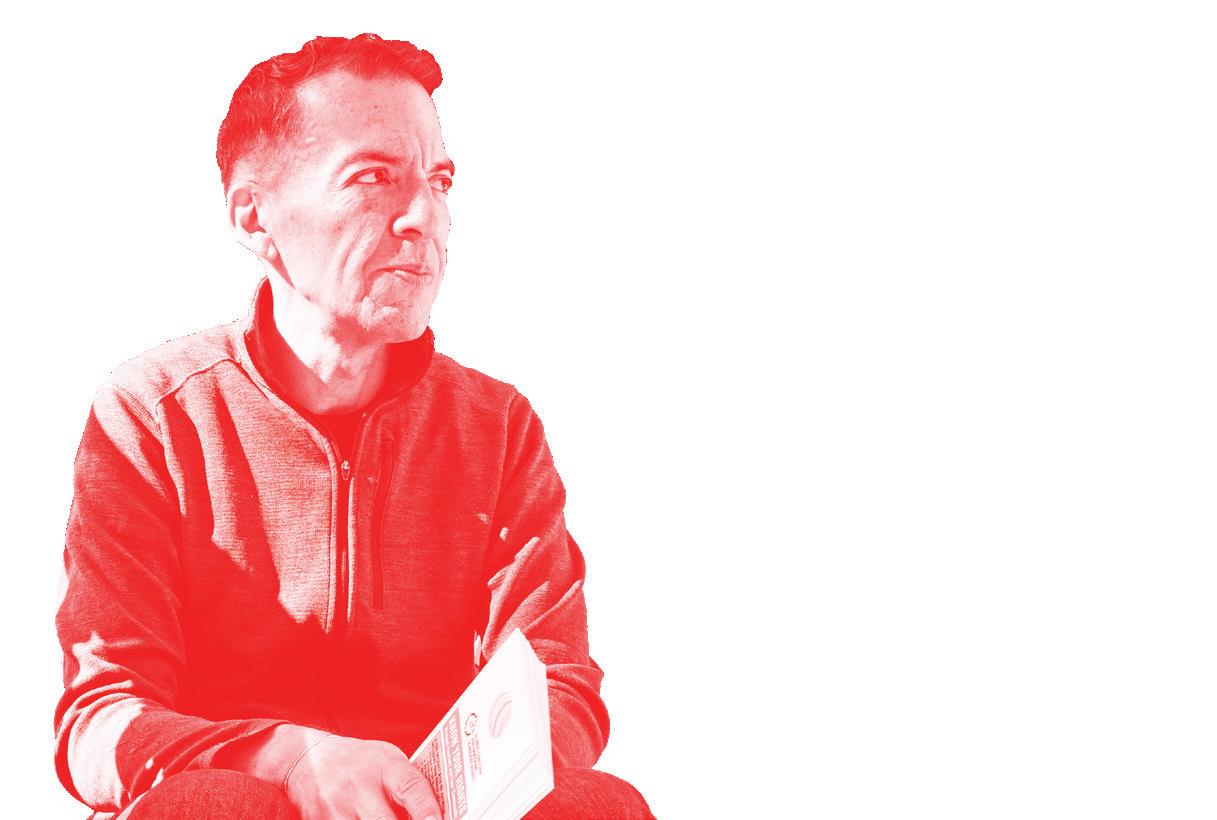
might not want to do but that you believe they will see are in their interests. Organizing is as difficult and messy as it is valuable
One mentor that really helped me was James Thindwa. He was pretty active in the anti-apartheid movement of the U.S. and hired me in 2004-ish. He wasn’t of any particular part of the le , but he understood organizers had an important role in the le broadly. However underpaid and underappreciated or small our roles were, he helped me see we were catalysts for big things.

I became involved with Chicago Grassroots Collaborative because James and I were working at Chicago Jobs with Justice, which is a similar labor and community coalition. [Around 2006], Grassroots Collaborative, Jobs with Justice, and a bunch of other groups got involved in the big-box living wage ordinance. When Walmart was trying to open its first stores in Chicago, union and community groups wanted to make sure that we put roadblocks in front of them. They either had to pay a living wage or not come into Chicago. [Editor’s note: The work of Grassroots Collective and others led the Chicago City Council to pass an ordinance requiring large retailers to pay a living wage in July 2006. Seven weeks later, Mayor Richard M. Daley vetoed the bill—the only veto of his career.]
Just before the pandemic, I was living on
the east coast and working with the American Federation of Teachers. I le my job and moved back in 2020 to be closer to my parents.
At the time, [Grassroots Collaborative’s previous director] Amisha Patel was looking for somebody with labor union experience to do some work with what we call bargaining for the common good, which is something the Chicago Teachers Union pioneered. That was my first role at the Collaborative, which started in 2021, and I became the executive director in 2023.
I feel grounded in Martin Luther King’s quote [adapted from an 1853 sermon by abolitionist minister Theodore Parker]: “The arc of the moral universe is long, but it bends towards justice.” I’m worried that young people take the options that are given to them for making a difference in the world without realizing that those options are structured for them by a world that wasn’t designed for them. We live in a society that answers problems with violence or money or hierarchy or domination and prisons. In each place and time, people have to use the options available while also realizing that they can create new ones. That means finding the approaches, tools, organizations, institutions, and relationships that actually create something more like what they want. I feel like that’s what the arc of the moral universe is.
The return of violence, both on a small scale and also the genocide in Gaza—things don’t just keep getting better, right? But I do believe that you can make some things better, and I think Chicago has gotten better in many ways. It’s become more tolerant and afforded more space for different identities, like queer and gender nonconforming people. I see the multiracial character of young organizers, especially activists motivated by Palestine and George Floyd. It gives me hope.
I think a lesson for anybody, anywhere, is that, even when there are setbacks, you can always see new ways of organizing the world. v
m mcaporale@chicagoreader.com
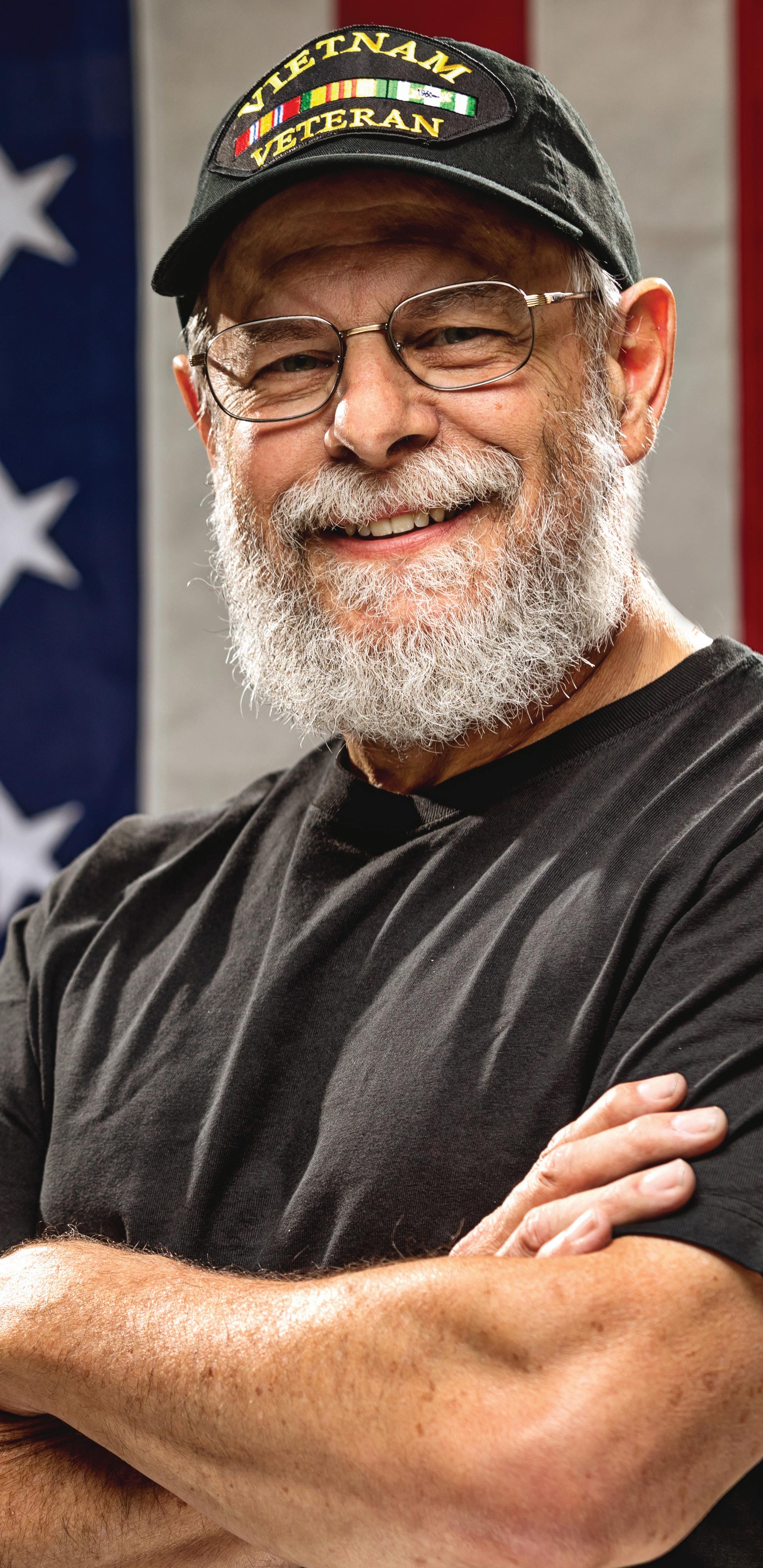




Janice Lim, 45, works at the Field Museum as head of the replication shop in the exhibitions department. She’d already studied art conservation and worked in furniture restoration by the time she learned what a replication shop was and that the Field had one. She thought the shop sounded so cool—and like such a perfect fit for her skills—that she wrote to the museum looking for a job, even offering to work for free.
The Field took her up on that offer, and in 2014 Lim began volunteering. She left after about a year, when a paying job didn’t open up, but in 2016 she was hired as a mount maker in the museum’s metal shop. Soon she was spending months each year in the replication shop instead, and in September 2022,


she took over as its head. Lim also helped lead the organizing campaign that won Field Museum workers a union with the American Federation of State, County & Municipal Employees in March 2023. She serves as a steward for her department.
Lim also plays drums in Chicago’s DIY music scene. Mostly self-taught, she learned to play at 19 from beloved weirdo-rock fixture Eorl Scholl, who walked into the record store where she worked and recruited her for a band that lasted one show. After that, she drummed in Civilized Man and then Gula Gila. She currently plays with former Gula Gila bandmate Jill Flanagan (previously of Forced Into Femininity) in the four-piece Shri , who debuted in June 2024.
Interview by PHILIP MONTORO
Photos by Kirk Williamson
Imake the fake stuff for the museum, and especially the temporary exhibits. When there’s an object that’s too delicate to be on display because of light, or it’s just too fragile to be put on a mount and displayed, or if we don’t even have the object or can’t get it on loan, they’ll have me make it.
I make the smaller fake stuff. So not the ginormous dinosaurs erected in the main hall, but the smaller stuff that can be a touchable for the audience—to help make it a tactile experience or help visually impaired folks.
O en we’ll have a show, and then we would want to have it tour around the country or to Canada. Sometimes there will be a wet specimen jar, which is a dead creature floating in a jar of alcohol, and o en they don’t want to travel those—it’s too delicate or whatnot. And they want me to make a replication of the creature and how it lived—instead of a snake coiled up in a jar, it would be a snake lunging at you.
We’re working with 3D prints more these days. If it’s not the correct species that they need for the show, that means I might chop off a tail, sculpt a new tail, correct the ears, and paint the body, either airbrush or by hand, with the correct pattern and colors
Sometimes to save me time, they might order a model online, but o en those models may leach things that might hurt organic objects in the case, like coral or bird skin.
We have a really amazing conservation lab. So they do this thing called an Oddy test: A conservator will ask us for samples of new materials we may use. There’s a little oven that he sets these samples in with little metal coupons made of copper, silver, and lead. Then, to speed up the process, he turns on the oven to a really low temperature and lets it run for a month. And once he pulls out the samples, he looks at the coupons, the little cut pieces of metal, and then he’ll see how they degraded over that month. And then he decides whether that material is safe enough to be within a case—it could be a paint sample, a piece of resin, a type of caulk. There are different ways to light an object that’s
very fragile. We have a great lighting team that will set a timer and measure the light and heat to make sure that it’s at a safe setting. But if it’s like, “No, this cannot even be out,” even in adjacent light or anything like that, then they would have me make something.
For a show called “Wild Color,” there were a few wet specimens, and one of them was a jar of little anglerfish. I think it was five the size of golf balls in one little jar. And they were black seadevil anglerfish. They didn’t want it to travel. So the designer took the opportunity to be like, “Hey, can you just make one living, bigger anglerfish? I would love for it to be, like, four inches by four inches.”
We have a really great fish collection, and we found one jarred anglerfish of that kind in the back. We got to pull it out and then measure it. I was given the iconic book of anglerfish by this man called Ted Pietsch, and I used that as a reference. The anglerfish is a deep-sea fish, and when you pull something up from that deep it o en kind of becomes zombified. Its skin starts peeling—like, dripping off. Even the anglerfish I had was pretty gnarly looking. So I was drawing from all different kinds of sources to make up this new big girl.
I used resin as the main material for the model, but it was really tricky. There was a lot of problem-solving with this show. It was like a color-coded show. Each case was a mixed case—the anglerfish was in the black-andwhite room, so the case it went in was with, like, maybe the hide of a skunk, a black-and-white bird, and then maybe some organic objects. So I had to use Oddy-approved materials.

Fortunately, though, from my experience in the mount shop, I knew which kind of wire, which kind of paint were already Oddy-approved. So I was able to use wire in the tail that I made. I first sculpt-
“I make the fake stuff for the museum.”

ed it with clay and then made a mold out of silicone and poured resin into it. I popped out two, but then those twins started to divert, because one of them was just a test. This was all kind of new to me—I didn’t know what would work. It was very experimental in that sense of, like, how to make a fin. I ended up using Japanese paper and this archival adhesive called [Paraloid] B-72.

I love miniatures, and they asked me to make a diorama of this Hungarian tell as part of a show called “First Kings of Europe.” It’s basically a large mound or hill. A tell is, like, when you have a bunch of civilizations buried on top of each other—it becomes a hill. And so it was this tell with these longhouses on top, and I made a water feature because it was surrounded by a river system. Through excavation and stuff, they pretty much knew where these longhouses existed. They gave me a sketch. Curators work with developers; developers work with designers; and then they work with me, as well as the woodshop and the mount shop. The developer gave me a really hearty info packet, like a dossier, and a video animation that someone made of the tell. So I
took stills of that. If they’re like, “Oh, here are longhouses, here’s an example,” they’ll give me enough, but I want to see something at a different angle or how it was woven. So I always do my own side research, which I totally enjoy. We revamped “Native Truths,” which reopened in May 2022, because we’ve been trying to decolonize the museum. We’re working with living artists, folks, tribes. The new one that’s rotating in is the Coast Salish, and that’s basically the Pacific Northwest, British Columbia area. And so I’m making a diorama of—there used to be this type of dog that’s now extinct called the woolly dog. They didn’t have sheep, so they would breed these dogs and shear their fur and weave really beautiful blankets, and sometimes mix in a little bit of goat hair, maybe some earth materials.
The diorama is a little island, and I’m supposed to make a little canoe where two women just rolled up and are about to feed the dogs salmon. They had the dogs on a diet of salmon, to make the coats really nice.
I absolutely love working for the museum, because of the ongoing educational aspect— we’re always learning, we’re always teaching the public, we’re holding and preserving things from the past for future generations.
People are there to learn, see something new, be blown away by something. We have a really great museum, and it’s amazing what, when we come together, we can show the public.
Isn’t that the whole point of the museum, to show the truth and what had existed? What exists and what existed before? I think if you show something that’s off—I don’t know, it’s just lazy. You’re just missing the point of a museum if you don’t take that seriously. v
m pmontoro@chicagoreader.com
Make time to learn something new with music and dance classes at Old Town School! We offer flexible schedules for all skill levels both in-person and online.


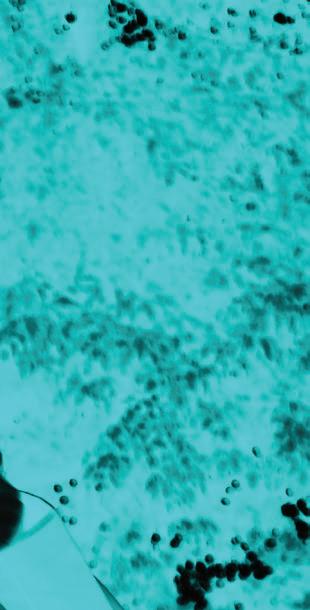

If you left your home at all this summer, you probably heard somebody blasting “on top of cars, on top of cars, shakin’ butt on top of cars” as they sped past you down the street. And if you were really lit, you might’ve been one of the folks shakin’ butt on top of cars. Twentyfive-year-old rapper, DJ, dancer, and choreo grapher Quimaya Sewell, aka Lil M.U. or Maya Unique, released “Top of Cars” in April, and much to her surprise, she had the juke song of the summer less than a year into her music career. She wasn’t necessarily even planning to go into music, but she’ll take juke as far as she can, with hopes to shed a positive light on Chicago’s culture. As summer began to wind down, Lil M.U. and I caught up by phone as she was planning the video shoot for “Top of Cars.” (The video came out on October 10.) She reflected on her roots as a dancer, the impact of juke music, and the whirlwind year she’s had.
Interview by TYRA NICOLE TRICHE
by Kirk Williamson
Iwas born and raised in Englewood. As a kid, I was very outgoing, kind of like I am now but probably a little bit bolder with everything. I was always dancing. I grew up dancing since I was three years old. I recently, like two years ago, got into DJing, and I just started rapping. I dabbled in making a song when I was younger, because my dad had a studio and he’s a DJ—he produced beats and stuff like that. So I dabbled in that when I was younger, but I never [thought] I’d have a music career growing up.
But now, you know, it turned into something. But growing up, I really was always dancing. You couldn’t tell me nothing! I’d be breaking out and dancing. I’d dance at the 63rd Street Beach by the drums and doing performances.
Dance has meant everything to me. It’s my first love. It was my only love, but I feel like music helped me expand that. But dance has always been an outlet for me: an expression when I can’t express myself, when I’m sad, when I’m happy, when I’m feeling lonely, emotional, anything. Dance has always been an outlet, and dance also is a way to bring everybody together. So I just feel like dance is really healing, and it’s always been healing for not just me but everybody.
I grew up dancing to juke music—it’s always been instilled in me. Always grew up to [Traxman’s] “Get Down Lil’ Momma,” [DJ Spinn’s] “Bounce N Break Yo Back,” all those things. When those came on, I was definitely bobbing my back down. I got videos to prove it! Juke music has always been a part of my life. I think that’s why it’s so heavy with me as far as how I represent Chicago.
[Transitioning from dance to DJing] hasn’t been hard, because it’s all connected—everything is connected through music. Dancing and DJing, it kind of goes hand in hand. When I DJ, I dance at the events. I know what beats or how things blend based on my ear and my counts also, so it all goes hand in hand. When I’m blending stuff, you gotta count it off just as well as you do when you dance. Then they go into my music, because I play my music at the DJ gigs, so it’s all tied to each other.
I’m very impulsive, so if I feel it, I’m gonna do it. That’s just me. The person that allowed me to get in the studio was someone named YdotGdot. He was the first person to take a chance and be like, “OK, you can use my studio.” You know, studios ain’t cheap. He was the first person like, “Yeah, you can use my studio and we can work together.” I’m like, OK, cool. So that was the first person that helped me. From there, my very first song kind of got some buzz, which got my name out there a little bit. Then I dropped my first-ever EP, which included my first song. That kind of took off—that’s going global now.
I started making music in October 2024, and the Handful EP came out in April 2025. I started it at the end of February, I believe, and I finished it at the end of March. I kind of used songs that were already out, that I’d put out on YouTube, and put them on the EP instead of just having them as singles. So, like, “M.U. Stomp,” my songs “Birthday” and “What?!,” those were songs that were singles, and I just put them on the EP.

I expected it to blow up, but not like this. I think this exceeded my expectations, honestly. I wasn’t expecting it to blow up in a short amount of time. Like, I knew it was going to do numbers, but I didn’t know it was going to be, like—right now, I think we passed seven million streams. I didn’t think it was gonna go this far. [Editor’s note: “Top of Cars” had topped 11 million streams on Spotify alone by publication time.]
[Going viral] has its ups and downs. Definitely the good, though, outweigh the bad. I would definitely say that. It’s helping me to see myself and grow as a person, too, and figure out if I really want to be in the music industry. Because it wasn’t my plan, but it’s giving me a glimpse of what it would be if I continue to pursue it, which I am. It’s giving me
“I grew up dancing to juke music— it’s always been instilled in me.”






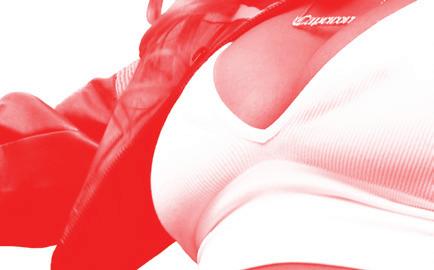
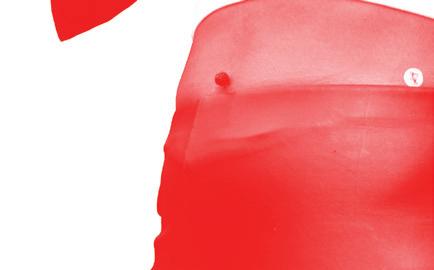
a glimpse of how I have to move, how I would have to grow, and how I would have to not take everything so personal. But overall, I’ve definitely gotten support from the city, so I love

I mean, it’s kind of crazy. I don’t think I grasp it, because I don’t live in the moment. I kind of keep going and going and going. So it’s crazy to see it in real time, people actually [dancing and listening to my music]. Like, “Oh, that’s crazy, that I really did that.” You know how you don’t expect things to go certain ways? But God has a plan. It got past me, beyond what I imagined it to be. I always imagined myself having this impact as a dancer, not as a [music] artist. So that’s kind of different. It especially feels great to know that I have not only the youth, but I have everyone of different ages, of different eras. And people giving me my fl owers in the footwork community, people giving me my fl owers, like, in
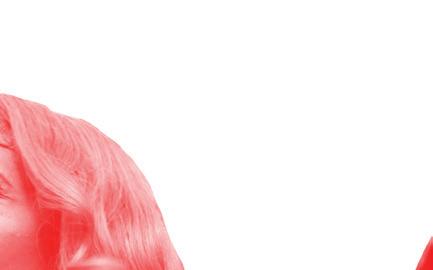

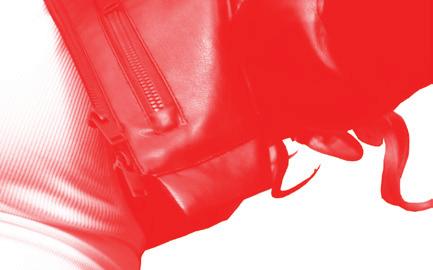





every era. I have the whole city on my back, supporting me, so I really feel great about that.
Mello Buckzz kind of started it, as far as pushing the juke genre out with her song “Move.” And I’m continuing that legacy, to push us to continue [striving] for people to really understand juke and really understand us far beyond drill, to really know what Chicago culture is and footwork. Because, you know, everybody tries to do it, but nobody really knows the history behind it. So [I’m] pushing that narrative and pushing for people to see [Chicagoans] in a positive light, and pushing us to make people dance again.
I’m trying to mix juke with almost everything. I’m trying to put Chicago on the map in so many ways, where it’s like, you can’t deny juke, you can’t deny Chicago. When you hear me, you hear Chicago. When you see me, you see Chicago. Because I definitely am going to rep Chicago wherever I go, and that was before I even started making music. So I’m definitely just putting the city on in as many ways as I can, and in a positive light.
I got a lot planned to keep pushing this Chicago narrative, [for people to] see beyond what the news [portrays] us as and what a lot of people push us as on social media. We are so much more than what people say we are. We are so talented in the city, and I just want people to see us as that and see us as much more than just where we come from. v
m ttriche@chicagoreader.com



Henry Carlson, 96, was born in Oak Park to Swedish immigrants. He was raised on Chicago’s far northwest side, graduated from Lane Tech College Prep High School in 1946, and studied civil engineering at the Illinois Institute of Technology. Just as he began to put his degree to work, he was dra ed into the U.S. Navy and spent four years working on a fl eet tanker off the southern coast of Japan during the Korean war. He married young and had a son and a daughter. Carlson worked for the City of Chicago from 1953 until 1990. Sixteen of those years were dedicated to the construction of the water purification plant near Navy Pier, a project of which he remains proud.
Carlson, a vocalist and accordionist, occasionally visited Sweden—including a formative first trip at age 17—and


maintains a connection to Swedish culture and community in Chicagoland. Always on the hunt for Swedish relics, he was a shopper at local estate sales and worked as a hobbyist reseller, though his mobility limits that nowadays. Still, for a nonagenarian, Carlson stays busy: He enjoys raising dahlias and birdwatching in his Park Ridge home garden; meeting with his Swedish lodge club; spending time with his daughter and grandchildren; playing bingo with the ladies at a local senior center; driving independently (he passes his test every year); and celebrating Swedish holidays and traditions, such as the Scandinavian Day Festival in Elgin’s Vasa Park, Midsommarfest in Rockford, and events at Andersonville’s Swedish American Museum.
Interview by TARYN MCFADDEN
Photos by Kirk Williamson
My background, as I say, is Swedish.
Both my parents and grandparents immigrated from Sweden. With my cousins, we had a Swedish musical group. I graduated from high school in ’46. It was in the late 40s that we played all these clubs along Clark [Street]. We’d play every Saturday for the Swedish dances here. These Swedish lodges would have their meetings, and then they’d have a little coffee, but then we’d play for the dance so they could remember back home—they could dance the schottis or the hambo.
I met a lot of Swedish people when we played for dances. I met my wife, in fact, at a Swedish dance. My wife’s name was Dorothy. She was from Michigan. Her parents both had immigrated, and they had a lodge, and my father-in-law played accordion, like I did. He played the button accordion, whereas I played the piano accordion. So it was a rather interesting group that I married into.
The fi rst time I went to Sweden, I was 17, with the Swedish male chorus from North Park College. Everything we sang was in Swedish. We sang in the Swedish churches, and we were on tour for an entire month. We went from the southern part of Sweden, from Malmö, all the way up to Luleå in the north part of Sweden.
All the other men were my father’s age—45, 50— and there were three or four of us young guys at that time. We did two concerts a day, for lunch and for dinner. And [at] the dinners, the participants or church people would stand up, and our names would be called, and those are the people we would go home with at night.
They rode a lot of horse[s] and buggies in those days. And no electricity, of course—everything was candles in the house when I got there. You wonder about fires, but everybody had candles going, and of course, the [toilets] were out in back. Some of them did have water inside. Then we’d have breakfast with them in the morning, and we’d get in the horse and buggy and head back to church till departure on the bus.
At that time, you know, I probably didn’t appreciate being a young kid, shall we say—what went on
there and how nice the people were to us in the churches. And most of those people that we went home with could not understand any English and our broken Swedish, but we got along with our hands—like anything else, you point. We knew what we were saying. But they were so kind.
When the tour was completed, I went to visit my grandparents out on the farm—my father’s parents and all my aunts and uncles at that time. I spent over three and a half months in Sweden with them. It was actually very rustic out on the farm. They lived in [Norrbo, near] Grangärde—it’s a small town probably about [40] miles from Falun, which is a big copper mine town. It’s the middle part of Sweden, and the name of the province is Dalarna. This was more where my father came from. My mother, she came from the southern part of Sweden, where her parents immigrated from. And spending three months out on a farm with 17 cousins, I got to pick up the language much sooner than I had anticipated, because they always said, “No English. You must learn to speak Swedish.”
I would relish to go back to Sweden. In fact, [my daughter just went] back to Sweden for ten days. I wish I could go with, but I don’t want to be a burden on anybody. It’s too difficult.
I think it’s been well over ten years [since] I went back. But at that time, I was a little more mobile. The first time I went back, I had 17 first cousins. And I just lost my last first cousin [in July].
I don’t have any people in my generation, unfortunately, anymore. I belong now to a Swedish lodge here in Chicago, [Verdandi Lodge Number 3 in North Park]. And it’s good, there are a few people that still—they’re certainly not as old as I— speak Swedish, and they want to retain that lodge [tradition]. Twice a month, we meet and have a little regular business meeting, and then of course we just have coffee or something a er. I have been a member for the last five years. It’s the only lodge that I can really recall here in the Chicago area. [Membership has] just gone down because, well, the older people are getting old, and their children



With 14 front-of-house restaurant jobs behind him, Ju stin E. Arnett-Graham, 39, has built a multifaceted career within the hospitality industry, largely in support of the tens of thousands of faceless workers in the trenches. As the creative director of beCo, he blends the art and media industries with a hospitality platform. As the founder of the events curation outfit Garn:t, he creates branded, chef-driven happenings outside the traditional four walls of the restaurant environment. And with backof-the-house veteran Nariba Shepherd, he cohosts Terms of Service , a podcast that explores the dark side of the restaurant industry with the aim of improving it for everyone. Arnett-Graham has even more projects in the works, but he still manages to hold down one shi a week for a major Chicago restaurant group, just to keep his finger on the pulse.
Interview by MIKE SULA
by Kirk Williamson
Ihad a stroke when I was two. I had to learn how to walk again. I was in speech therapy for years. My Rs came out like Ws. Shout-out to speech pathologists out there, because they are truly guardian angels. My journey with my own speech led me to create a platform for people to communicate authentically for themselves.
I have said for the longest time that the hospitality industry is the most inhospitable industry that we all have access to. And I would love that to change.
When I was 23 I was living in Columbus, Ohio. I got a job offer to be a server. I was making money hand over fist. It was just off campus. So we were packed. The food was trash. I had friends in the front of house, but I gravitated to the line cooks and the prep cooks. Those were my homies. They taught me what comida was. They were like, “amigo, amigo,” and put me together a little plate. It just showed me a different side of this stupid restaurant.
I started to wonder, “What does it feel like to be putting up food that is supposed to represent your culture through such a watered-down lens?” I saw them make things they were passionate about, while also on a food assembly line making smothered burritos with extra sour cream.
Terms of Service started because of the industry shutdown due to COVID. Everything we saw around us was GoFundMes for big players of the industry. There was no consideration for asking the people that make this industry what it is how the hell they were doing.
I got together with my colleagues, and I was like, “Hey, I think that we should sit down with the spectrum of the industry and ask them.” And so we did a little mini documentary called Six Feet Apart, from the perspective of restaurant laborers that no one was looking out for. We put that online and it really took off. We realized very quickly that there was no platform for the hospitality industry community to be represented. There’s always the well-to-do chefs talking about the well-to-do shit they do, which has nothing to do with the actual labor force that
brings this industry to life.
We wanted it to be light, fun, and engaging, while getting into some deep-seated topics of people’s lived experiences. I wanted to speak the language of the industry. Real talk. No bullshit. It started with us reaching out to our friends, and it grew from there. We took on more sensitive, topical conversations a er season two, because we started getting a lot of PR interest, and they were pitching things like, “Maybe you should talk about The Bear .’” And no, I don’t want to fucking talk about the goddamn Bear, unless The Bear wants to acknowledge that they’re capitalizing off the trauma of the industry. That’s when we got a lot more specific, because we didn’t want to be a platform that talked about this pop-culture phenomenon when we’ve lived it for years.
Shows like Chopped and Bar Rescue are in our faces every single day, and the general public feels like everything is absolutely fantastic, but they don’t understand the type of demons that we all face in this industry.
We’ve talked about sex work in the hospitality industry. Bad behavior within the industry from a chef’s perspective. We’ve talked financial sustainability, financial wellness, financial management— which hospitality businesses don’t seem to give a shit about. Parenting within the industry. We’ve explored losing yourself just for critical acclaim. Mental health. Alcohol- and drug-related issues. What does it look like to ensure that you’re taking care of your body, to ensure that you can perform the task of your job?
We’ve talked about food waste, food sustainability. We’re going to be dropping an episode with the Orange Tent Project about homelessness, painting the reality that everyone is closer to homelessness than financial sustainability in this industry.
When we sat down with [southwest side state] Senator Celina Villanueva and Mike Moreno Jr. [Osito’s Tap, Moreno’s Liquors], that was a very specific conversation directed toward our industry about how we can have migrant protections for our

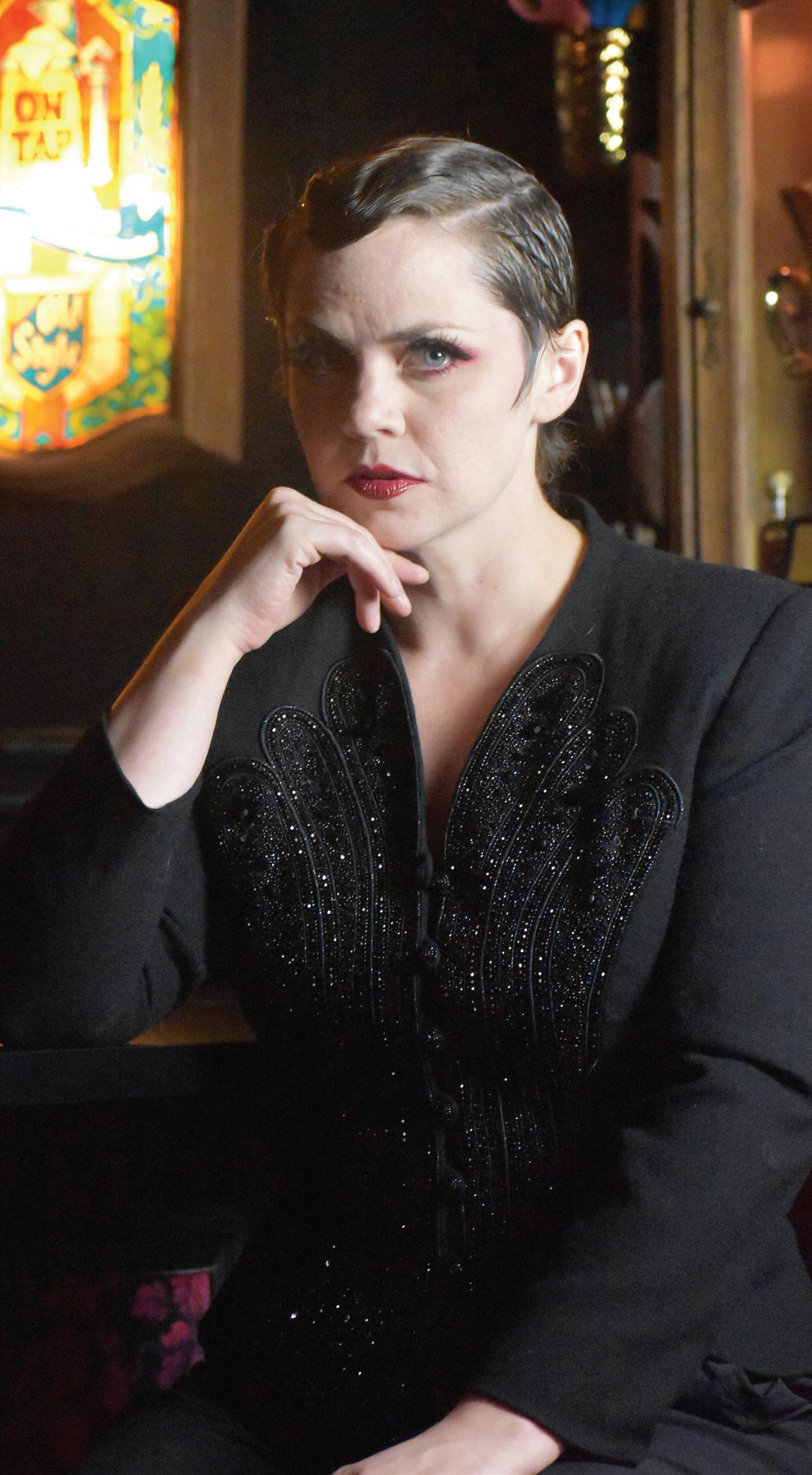

I’ve been in theater since junior high, and then I was captain of my high school speech and debate team. I’m a real nerd, but I didn’t start dancing until college. I was originally focused on playing soccer, and then one day I just decided I was bored with that and wanted to do something different. There was an extracurricular program at Truman State University where you could take all these different dance classes for free. On a whim, I took a ballet class, and then I just got really invested in it. That’s where I started taking belly dancing and burlesque classes, too.
There was a burlesque performer named Lola van Ella from Saint Louis who decided to host a burlesque workshop at my school. She was a really important influence on me because she was the instigator that got me involved in things like the Show-Me Burlesque Festival and other productions in Saint Louis. She also introduced me to performer and producer Bazuka Joe, who is now a huge part of the Newport Theater.
reflecting a bunch of different cultures that may or may not be your own. So when you try to fuse or add things to it, you really want to be mindful of its origins. I found that there were a lot more opportunities to work and create under the burlesque umbrella. As long as you aren’t being offensive or punching down, there is a lot of freedom to explore and create new things.
Lola started hiring me to do some shows in Saint Louis, and I ended up moving there for its art community. There were a lot of creative people there doing things that were really out of the box when it came to burlesque. There was a lot of performance art infusion that was really different than what I interpreted burlesque to be. For instance, at a festival, one of my friends did an act where she was a robot and then she turned into a flower, and I was just like, “I can’t believe that. You can do that in burlesque? There’s a space for that?”
The Uncanny Attic , which was part of Steppenwolf’s 2025 LookOut Series. The Newport Theater will be hosting its annual Bump and Grind Ball fundraising event January 24.
Born in Cary, Illinois, Eva la Feva is a Chicago burlesque and belly dancer. She is also the founder and artistic director of the Newport Theater, a cornerstone of the city’s burlesque and fringe theater scene, and the founder of Feva Pitch Productions, a burlesque and nightlife entertainment company. Her work blends comedic neoburlesque and classic styles, and she is a prominent and sought-a er performer in Chicago’s nightlife scene. La Feva has produced notable shows such as the Clipper Cabaret, Siren Song Cabaret, and Found’s Quarterly Burlesque Revue, amongst others. La Feva also originated the role of Clara in the absurdist dark comedy
A er I graduated, I moved to Columbia, Missouri, and started dancing with a company there called Moon Belly Dance. I was training pretty extensively and then got into a series of random opportunities. For a while I was touring with a traveling belly dance company called the Bellydance Superstars as their merchandise person. I wasn’t dancing, to be clear, but it allowed me to travel with a bunch of dancers and see them prep for shows. It was interesting to see how organizers ran things and how shows were structured. It also showed me how to organize large groups of dancers, [and] how people connect with each other so that everyone has the same level of emotional investment, which I think is really important for success. Everyone needs to kind of rally around the same flag, so to speak.
I also did a couple of shows with a group called Bellydance Evolution which was also a touring company. Basically, they go to different cities—I performed mostly in New York and Washington, D.C.—and cast people to be in their chorus line.
I really loved belly dancing, but the gig opportunities are a bit more limited, and you’re obviously
As a performer, I have a hard time being serious ever, onstage and off. I try to always put some level of comedy or tongue-in-cheek into my work. For better or worse, sometimes I cling to really stupid ideas that I just think are really funny and then I won’t let go of them until I see them realized. I really enjoy, as an audience member, seeing the fusion of humor and sensuality because I think there’s a lot of people who don’t always feel coordinated or sexy, so it’s nice to have permission to laugh and smile at yourself. I have to explain a lot to people that when a burlesque performer calls something stupid, it’s one of the highest compliments we can give to each other. “That act was so stupid!” I bounced around a lot in my early 20s, living on people’s couches and stuff in a lot of different locations. I moved to Chicago a er living in Spain with my sister because I was kind of broke from teaching English there. I came home to regroup and save some cash and then sort of fell into the performance community here where, like in Saint Louis, there were a lot of people doing really interesting fusion work and putting together concepts that I thought were really artistic and different. Wanting

Reverend Dr. Luther Young Jr. is approaching his second anniversary as pastor of worship and spiritual formation at Lighthouse Church in Lincoln Park. The Black-centered LGBTQ+-affirming church was founded by Reverend Jamie Frazier in 2013 to address inequities experienced by queer Black Chicagoans and create a place of worship welcoming to all. A sister organization, the Lighthouse Foundation, was launched in 2019 as a Black LGBTQ+led multiracial social justice group that promotes physical, spiritual, and economic wellness through education and cultural events.
Young is also an assistant professor of religion and society at Boston University School of Theology. For the past five years, he’s served as board chair of the Indianapolis-based Disciples LGBTQ+ Alliance, which works to help the Dis-


ciples of Christ denomination become more affirming and inclusive of LGBTQ+ people. Young, who earned his PhD in sociology at Ohio State University, is currently working on a book project on Black LGBTQ+ people in the church, and has already authored scholarly articles on the topic for Sociology of Religion and the Journal for the Scientifi c Study of Religion
Young says that when he’s asked fellow Black clergy how their churches address the subject of sexual orientation and gender identity, they’ve responded that their leadership is afraid of backlash or that their congregations simply “aren’t ready” for the conversation. He’s here to correct those misconceptions. “I tell them I interviewed [congregants], and they’re ready for this conversation. They’re waiting on you.”
Interview by DEVYN-MARHSALL BROWN
Photos by Kirk Williamson
Lighthouse was founded in 2013 and has since blossomed into this really thriving ministry, a safe haven for Black LGBTQ+ people, but also a space for all people. We are a church of a variety of gender identities and expressions, sexual identities, orientations, expressions, and belief systems. Not everybody who attends Lighthouse Church regularly or [is a member] of the church, I would say, consider themself to be Christian. We are a Christian church, but we do make space for that diversity. As long as you can align with our central mission of being passionate about Jesus and being serious about justice, and our core values around love, liberation, and inclusion, there’s a space for you.
Jesus was all about liberating folks, bringing them into greater community, and dismantling systems of oppression and unjust power. And it is with that lens that we approach scripture. Our sermons will always have a justice component where we ask, “Who is the most marginalized in our society? Who is the most oppressed? Who are the ones who are being le out? And how can we, as followers of Christ, seek to mitigate that oppression, seek to uproot those systems of injustice?”
Progressive Christians sometimes say “Throw away the Bible,” but we’re not interested in that at Lighthouse. We dive into and wrestle with how texts have been used versus what the text actually says. We don’t harp too much on the overtly political [nature] of our sociopolitical landscape, partly because the folks who go to our church live it every day. We can speak to those issues, but also it is a space where we can—at least for those 90 minutes—not be subject to those issues. . . . We have other space for that, such as Real Talk, the [social] hour a er service. We try to foster community in a space where people can thrive and have a respite from all that is happening in our world.
I grew up Pentecostal in South Carolina, and so that was my church experience until I became an adult. A er I le home, I moved to Nashville, Tennessee, and attended Belmont University for undergrad. I majored in audio engineering tech-
nology and did some work in music production and studio production, both in church and studios. I went to seminary at Vanderbilt University and did my masters of divinity there. It was there that I discovered the Disciples of Christ.
In seminary, apparently there were people who didn’t know I was queer. So I was like, “Hey, in case you didn’t know, I like guys.” And that did not go well with the church that I was serving at the time, which was a Missionary Baptist Church. I ended up leaving that church, and the Disciples essentially welcomed me with open arms. It was a very complicated time, because that church was [where I was doing] my internship for my degree program. And so I lost my church. I lost my community, I also lost my internship in a really short time. I was able to intern at a Disciples congregation, and I discovered there were Black folks who were Disciples. Some of these churches are great, but I need a church experience with other Black folks that can speak to and hearken to the lineage and legacy of Black Christianity. I found that with the Disciples, and so I connected with New Covenant Christian Church in Nashville, where I was ordained, and I have been part of the DLC ever since.
In that process, I realized I was interested in anti-racism work and LGBTQ+ inclusion in Black churches. There’s just not a lot of folks who have really delved into issues of gender and sexuality in predominantly Black churches. There are some, but there aren’t a lot. That was God’s way of telling me, like, “Alright, well, I guess you better go in and help develop some of these resources.”
I am interested in the role that religion plays in people’s everyday lives, not just what’s happening on Sunday morning. In what ways is religion helpful for mitigating systems of oppression, or in what ways does religion engender systems of oppression? I went to Ohio State University for my PhD, and that’s one of my areas of expertise—social inequalities in the world, but specifically looking at that within the context of Black LGBTQ+ people in Christianity.
“We’d play for the dance so they could remember back home.”
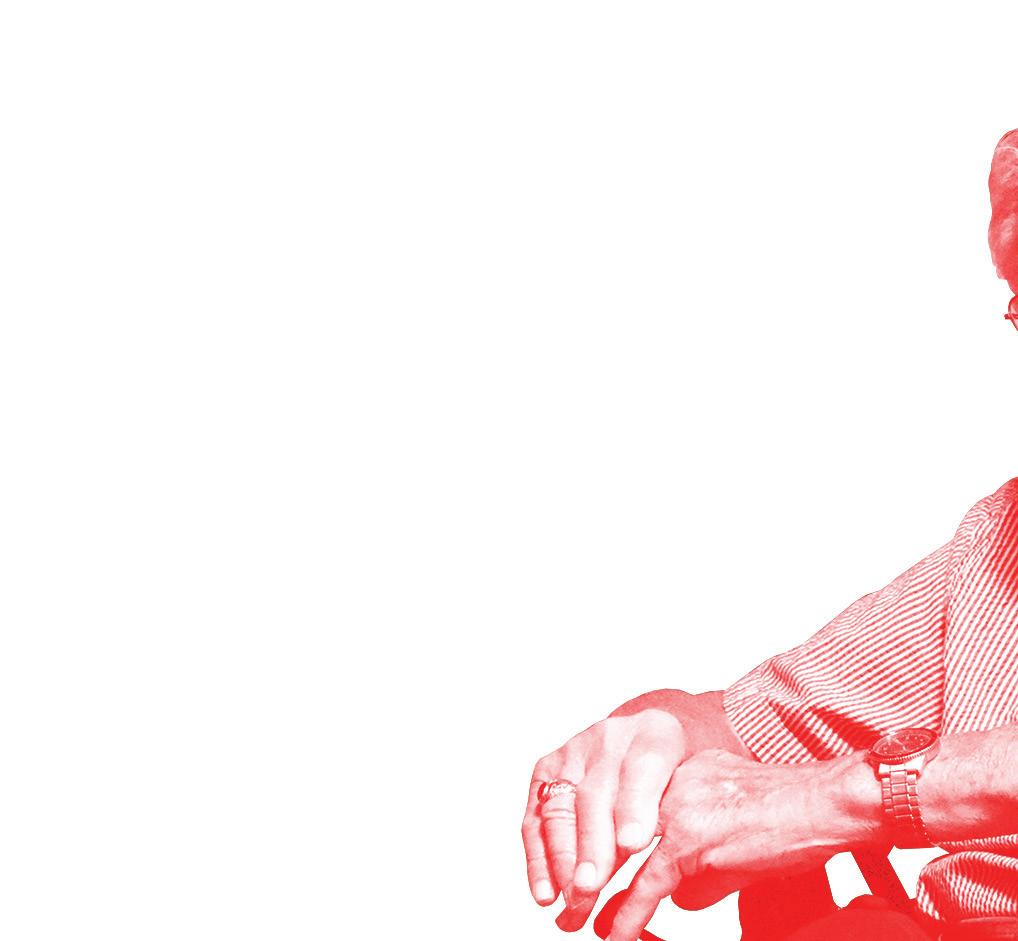

have never belonged to it.
I met a lot of people—of course, at my age, [they’re] all gone—at the Swedish clubs that they had along Clark Street. And the stores here—I remember going with my father. We would buy the herring at Christmastime that was in the old wooden kegs, imported Swedish beans in gunnysacks—and that [era], it’s disappeared. But I still continue to make glögg at Christmastime. I’ve been making glögg for 50 years, as far as that goes. I bought a new garbage can, a 20-gallon, and we would make 20 gallons of that before Christmas. It was always so good to have that fragrance—it felt like I had been drinking! We wanted to have that tradition. I still make 20 gallons of it at Christmastime and give it away. But I taught my grandchildren; they know how to make the glögg for me.

When I came back [from the navy] in 1956, [we] bought a home there, and I’m still living there.
[People say,] “Go to assisted living.” I said, “That’s like going to a motel. No.” It’s helpful, my daughter—she’s close to me, and she helps me, shall we say, “downsize.” I’ve got my backyard; I do my gardening. I’m in a dahlia club, so I raise dahlias annually. I have to work on my hands and knees now, but at least I can get out and work on them.

I’m glad that I was able to put all four of [my grandchildren] through college, and they hopefully have a better life, as they say. I’ve had a good one. Other than the fact of my wife passing. I had a tragedy—I lost my son six months after my wife passed away. So it was not a good year. [But my wife and I] had 65 years together, and we resided here in the Chicago area, out in Park Ridge.
colleagues, and what does that look like from policy into practice?
We put up something online, just saying how the industry has been too quiet. It’s one thing to not understand how to navigate this situation, but it’s another to see it come into your community, affect your neighbors, your colleagues, your friends, and not say a goddamn thing. And that is something that I have a very significant problem with, because if you’re not doing anything to protect our own, then you never gave a shit in the first fucking place.
We got some crazy DMs when we made a public statement against ICE and the threat of the National Guard coming to Chicago from some very surprising individuals: signifi cant chefs that feel as if what’s happening right now is just collateral damage. And I was like, “Wow.”

fear and a desire to protect your staff. They’re naturally going to admit the latter. But the reality is, I feel like it’s cowardice, because they don’t want to isolate their consumer base. It’s capitalism at the end of the day. They just want to make sure that they’re making money. What seems to be the norm out here right now from numerous restaurant groups with regard to ICE protections for unprotected labor in this industry is that there’s no internal cultural dialogue as to what they’re doing, outside of just holding them at the door. The reality is that the employers want to remain compliant so they don’t seem biased. That’s a very hard pill for me to swallow.
The hardest part is getting up.
Truthfully, I don’t think about my age anymore, other than the fact that I can’t do what I used to do. I get tired more rapidly. And it just bothers me because, you know, I figure, “I can still do this.” Well, I can, to a point. And then I just gotta realize my body is just not strong enough. So I work as long as I can. If I get tired, I rest. I have nothing that can’t wait. If it doesn’t get done today, it’s hopefully gonna get done tomorrow.
So that’s about it. As I say, I’ve enjoyed my life, certainly. If I do it, I have to do it slower— go from day to day.
The world has changed, but it’s for the better in some ways. Others—can’t do anything about it. v
m tmcfadden@chicagoreader.com
We got one from a wellknown chef that was saying, “Yes, there are immigrants here that are doing it the right way, but amongst potential criminals.” I was like, “Well, that’s fascinating, because you’re actually in charge of a significant restaurant group. These are not only members of your staff. They’re also community members.” He didn’t like my response, so he blocked me. He’s like, “I thought you guys were great, but you’re just leaning one way that doesn’t understand the functionality of the industry.”
This silence comes from a combination of


Across the board the hospitality industry isn’t saying anything because it isn’t threatened the same way that it was during COVID. That affected literally everyone, and now ICE only affects a very specifi c percentage of the industry—the most vulnerable, the most overlooked. It’s the people that make this industry run all day, every day, without any sort of acknowledgement. It’s easier for people to look the other way. I do want to acknowledge those in the industry for navigating a difficult reality. My hope for my colleagues and people that I will never meet is to ensure that you always remember to give a shit about the stranger that’s next to you, because you never know how important that is in general. v
m msula@chicagoreader.com

“I wanted to speak the language of the industry. Real talk. No bullshit.”
to play in that sandbox with everybody is what made me stay here and eventually create the Newport Theater.
A couple of things happened that kind of set that stage for the Newport. The Uptown Underground [which later became the Baton Lounge and reopens soon as Chicago Eagle] was a burlesque venue that a lot of people performed at that shuttered unexpectedly. Overnight there were a lot of burlesque shows that had been running their productions there that no longer had a home. There was this period where we were all asking ourselves, “Where do we go now?”
At the same time, my partner at the time, Adam Burke, who is a Chicago comedian, was doing a show at Under the Gun Theater. He introduced me to Mark Geary, who is the head of Tight Five Productions [Geary is also the cofounder of Lincoln Lodge]. The Under the Gun space was always meant to be a kind of temporary location for them but they ended up being the sole renters, so when they were about to leave, I had a conversation with Mark about taking over the space to create a venue for burlesque and variety shows. He told me, “OK, put it on paper. Let’s put together a budget and figure out if there’s a way we could make this work.” Mark had a huge influence on getting Newport off the ground, which meant a lot because he’s not even really affiliated with the burlesque community.
of competition. We run classes and try to give people opportunities to launch their projects and get support. We try to keep the rent for producing in the space low in order to be accessible. I really appreciate the way Bazuka Joe has structured our classes because each teacher has pretty much full control over how they want to run their class.
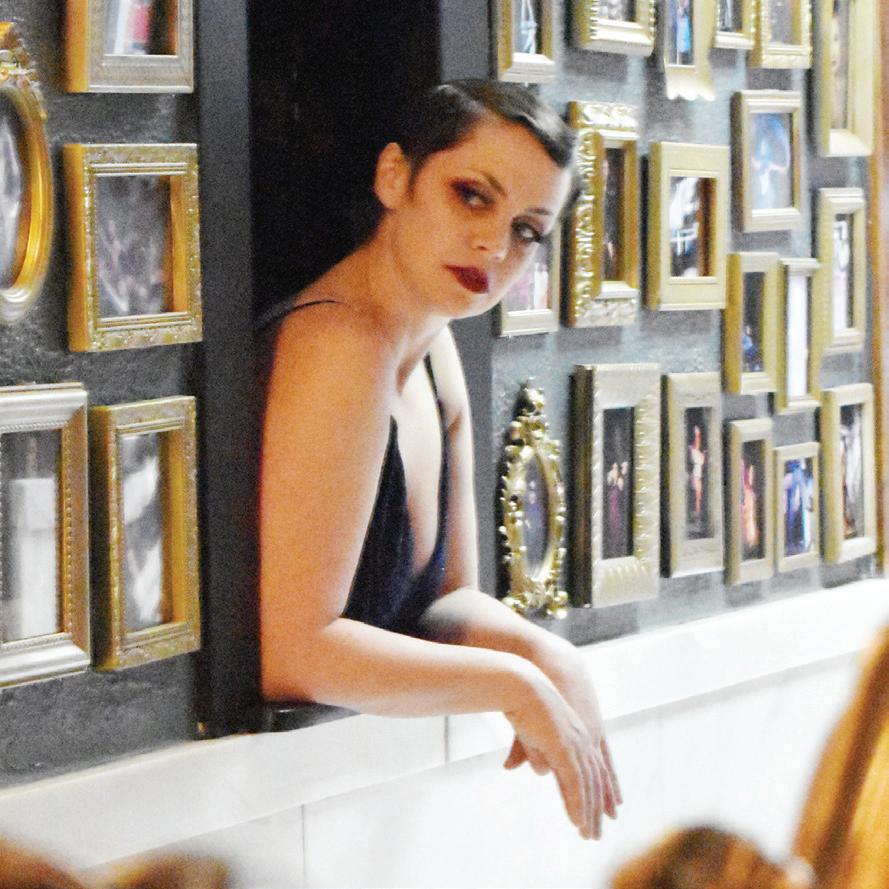
In June of 2019, we officially launched the new concept. One thing the Newport really focused on early on is collaboration instead
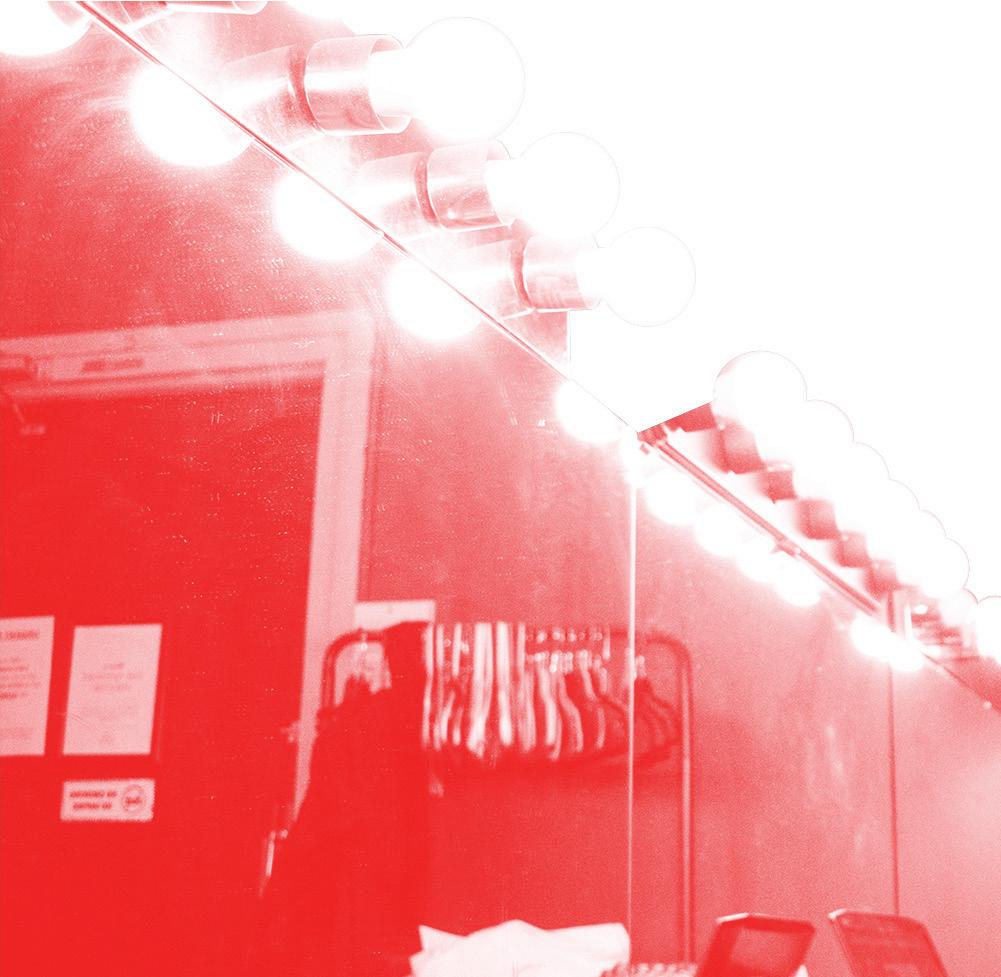
I think one of my greatest assets as a leader is that I’m able to attract really wonderful people who contribute to the Newport. This project started as just something I was doing, but now the Newport is really a collection of so many people like Bazuka Joe; Natanya Rubin, who manages [weekly cabaret show] Peek-Easy; Jesse Genito, who started as a bartender and is now our studio manager and in-house photographer; our marketing team—all these people working together. I think a lot of Newport’s success is that I really do feel like we’re an artist collective. Something that sets the Newport apart is a very come-as-you-are energy. We don’t judge. We’ve had a lot of people say they’ve done a lot of gender exploration or other identity searching through our classes. I think it’s really important to have a space where you can create and be excited and not feel like you’re being judged. I know there was a period in burlesque history where there were more rigid ideas about what you could do on stage; you had to wear heels, you couldn’t do this, or you couldn’t do that. Our approach is you can do anything. v
m crenken@chicagoreader.com
“As a performer, I have a hard time being serious ever, onstage and off.”

“Oppression likes to thrive in the shadows. Injustice likes the secrecy.”


YOUNG from p. 15
I feel like there is an assumption that the Black church is just homophobic and transphobic. I was really wanting to interrogate that. When I saw these instances of Black preachers railing against queer communities, folks like Kim Burrell. (That girl stay in the limelight. She don’t know how to be quiet!) The question that would always come up for me is, “Gosh, what was happening in the room? Were people shocked? Were people appalled? Did anybody leave?”
[ Editor’s note: Kim Burrell is a Texas gospel singer and pastor who came under fire in 2017 for her anti-LGBTQ+ rhetoric, which she publicly apologized for in 2024.]

it’s going to be an issue. Or they may be OK with y’all being there, and everybody knows that y’all are together—but they’re not going to perform your wedding ceremony.

If you read any of my articles, there’s usually a line in there somewhere that says the Black church is not a monolith. There’s a diversity of perspectives, and that diversity can be surprising sometimes. Some churches are just LGBTQ+-affirming all the way. Some make it very clear that they believe that homosexuality is wrong and marriage is between a man and a woman, and then there are churches in the middle. And I argue that a lot of times those churches in the middle can be most interesting to examine. . . . This can range from churches that may not say gays are going to hell, but if you go to church holding hands with your same-gender partner,
I would argue, the majority fall in that middle ground. There’s a whole lot of variation in there, and that variation—what I’ve argued in my work—is what has allowed a lot of Black queer folks to go to church, because they can find one that’s accepting enough. Completely affirming churches like [those] in Chicago don’t exist broadly across the U.S. When I’ve asked people, “Why do you choose to go to this church over another?,” there are all kinds of answers that go with that, such as, “My family goes to this church,” or “This was the church that I was raised in and I don’t want to leave that.” Or “I don’t want to go to a church that’s all about my sexuality. I want to go to a church where I can just be somebody. I want to just pick a church because I like it, because they’re not going to send me to hell every Sunday.” If we can start from a lens of perhaps the Black church is just not this bigoted institution, but rather there’s a lot of diversity here, we might be able to shift more churches to be more accepting, affirming to, and advocating [for] LGBTQ+ members. v
m dmbrown@chicagoreader.com

Bozhi Tian makes huge stuff happen using some of the tiniest pieces of the universe. Born in Xi’an, China, and educated at Fudan University in Shanghai and at Harvard, he dreamed of a career in the visual arts before a high school chemistry class inspired him to pursue science—where his creative spirit and imagination have taken him far.
Tian is now a chemist and professor at the University of Chicago, where he founded the Tian Research Group in 2012. He’s done pioneering work in photo-
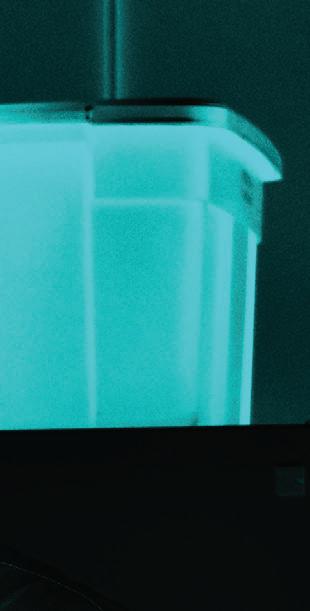

electroceuticals and living bioelectronics, creating drug-free, cell-based, nongenetic therapies that integrate electronics with biological systems and promote healing in a way that prioritizes environmental sustainability and a better, more humane world. A proud mentor to the next generation of Chicago scientists, Tian believes passionately in the role of imagination in scientifi c advancement— and he continues to create visual art that, like his lab’s breakthroughs, merges nature and technology.
Interview by JAMIE LUDWIG
Photos by Kirk Williamson
My father, he’s the artist. He practiced calligraphy. So when I was three years old, I started calligraphy. When I was six, I started to change to something slightly different—painting— and I found myself more interested in that. I started with traditional Chinese painting; the paintbrush and a lot of the ink is the same as calligraphy. Later, I practiced oil painting and watercolor as well. When I was 14 years old, I started to learn chemistry. I still remember the instructor playing with some chemicals, and there were a lot of color changes. I was so fascinated—I started to [think] maybe I should consider science as my career path. Before that, my parents and I believed I probably should pursue an art career. I even thought I should be an architect, because I loved art, threedimensional objects, and mathematics. But I really felt that science probably had even more fascinating things and mysteries.
The real beginning of my scientific journey was in 2000, when I joined a research lab for the first time during the summer before my junior year [of college]. I studied nanoporous materials—essentially, a porous material, but the size of the pore is at the nanometer scale. What’s remarkable about nanoporous materials is that the pores are highly ordered. They can be arranged in a honeycomb manner, like two-dimensional and threedimensional patterns. I found a lot of fulfillment in doing the science and having direct experience with those beautiful things.
I think [my art background] has certainly helped my research, especially when nature-inspired processes are involved. That’s number one. Number two, I vividly remember that when I practiced calligraphy as a kid, I had to sit there at least five hours just to pay attention to the details. This is a good habit, because when we’re doing science, we need focus. When we focus, time goes very quickly, but we can capture finer details and make discoveries. The third thing is that I sometimes feel that I have a better capability to draw connections between two things that seem like they have no connection or a transdisciplinary connection. Let’s say I try to
design some electronic devices or optoelectronic systems that can emit light. I’ll start to think how in nature, some insects, their surfaces can reflect light. [Making] those connections sometimes gives me fresh ideas.
At that time, the majority of the [nanoporous] materials were insulators, so they do not conduct electricity. A er finishing a lot of projects, I realized I probably needed to work on something that, in terms of function, could be more diverse. Then I thought about electronic systems, especially semiconductors. Starting from my PhD, I started to focus on semiconductor materials, especially silicon, because silicon is the most important building-block material for a computer chip or solar cells. My first PhD work back at Harvard was actually about solar cells.
After I finished that project, I realized the biology system is even more fascinating because there’s a lot of unknowns. So why don’t we choose to combine biology with a semiconductor system and do some interface?

So that’s the starting point of my career in bioelectronics, around 2008. My postdoc was in bioengineering. I learned tissue engineering and regenerative medicine, [and] it became natural for me to combine electronic systems and biological tissues in a more seamless manner.
Our lab is highly diverse, and I intentionally make it diverse. For example, my postdocs are mostly engineers: There are bioengineers, there are electrical engineers, and there are environmental and science engineers. And my graduate students: There are chemists, there are biophysicists. In my early time, we also had a medical doctor, a PhD student. We need people with very different backgrounds so that we can do highly interdisciplinary work. Collaboration is not just a way to enhance the quality of the work; it’s a way for me to learn from my collabo-
“We
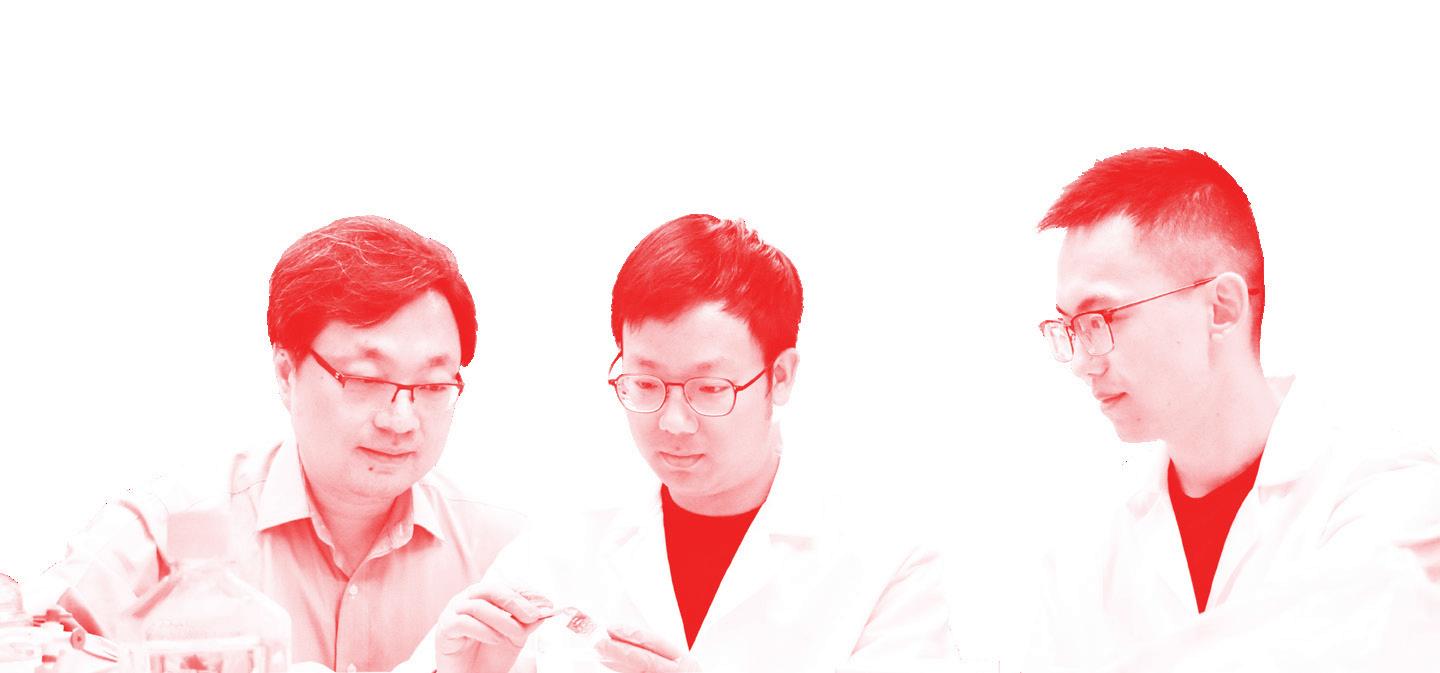
rators. For example, for medical doctors, I have a collaboration with a cardiac surgeon; I have a collaboration with a neurosurgeon working on sleep-disorder treatment. I also have a collaboration with an orthopedic surgeon—we’re thinking of designing a device to monitor patients’ recovery a er shoulder-replacement surgery.

I also have a collaborator who is a pediatrician. Recently we developed a remote sensor that can potentially detect the stress hormones of preterm infants. [And] we designed some device that can mimic kangaroo care. This is important for preterm infants; they don’t have enough time for skin-toskin contact with the mother. So we designed an artificial system that can mimic that process. Not just for this skinlike feeling—we can also create a heartbeat sound or play music or do things like temperature regulation or mechanical motion.
So we have the fundamental side. We also have the translational side. There are a few very important translational examples in my lab. The most important is the optically driven cardio pacemaker. Traditional cardio pacemakers are pretty bulky and rigid. So we developed something extremely thin and lightweight, where we can use light pulse instead of electro pulse for heart pacing. We’ve also developed a skin patch that can be used to treat psoriasis, a type of skin inflammation. In the device, we have the wearable electronics part, which is flexible and stretchable but also has living cells, which are commensal bacteria. They’re not dangerous. In fact, they
can actually help us treat skin inflammation. And these two are examples of what we call photoelectroceuticals and living bioelectronics.
In my lab, my philosophy is that I don’t want to create internal competition. Every individual has their own project that’s very distinct. This is healthy, because they can take their time and focus on the depths and innovation instead of launching a project in order to compete with each other. It also provides the opportunity to collaborate and support each other.
One of the typical questions we try to address is, “How does this device help us instead of invade our privacy?” Almost every player in the bioelectronics community has to be cautious in terms of our device design, especially when the device involves wireless components—because wireless components mean that potentially other people can get the data remotely without permission. But we’ll make sure, for example, the data collection distance would be limited to just less than a few centimeters, so that you can only use something like your cell phone to collect the data and it won’t potentially be detected by other people.
There are strategies to navigate this, and I really feel that as a professor, as the manager or leader of the research group, we have to train our students and postdocs really well to let them know the right things to do and what are not the right things to do. In our community, we mostly have agreement and know what areas we should try to work to solve the problem. Other areas, we just step away and focus more on the fundamental side.
I really feel that as a scientist, the most important thing is fi rst to be a good person and have a good personality. And then you do great science. If you have hobbies like art, that’s great. If not, that’s also totally fine, but being a good person, that’s the number one most important thing. We want to design materials that benefit humanity. We want to do good things instead of going to the other side. And also, this field relies largely on collaboration. So we need good people, and then the collaboration will be more fruitful. v
m jludwig@chicagoreader.com






Kyle Butler eats, sleeps, and breathes tattooing. The Aurora-born artist and entrepreneur has been collecting ink since he gave himself his first stick ’n’ poke at age 14 (it was the Deathwish Skateboards logo). A week a er his 18th birthday, he moved to Chicago to study creative writing at Columbia College and soon began home tattooing. Two years later, he dropped out to devote himself to what had become a full-blown obsession. Now 33, he’s the sole owner of the Irving Park street shop Red Devil Tattoo, which he started with Miranda Larson in 2021, and also runs a private, appointment-only studio nearby.
As tattooing moved from an underground industry to a “legitimate” trade in the late 20th century, home tattooing became frowned upon by the broader professional community. But
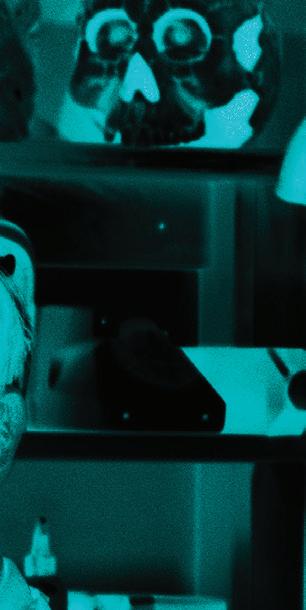

many artists—including many industry trailblazers—had started as so-called “scratchers.” Over the past decade, home tattooing has experienced something of a renaissance thanks to the wide availability of single-use needles (an industry standard since the early 2000s) and home tattoo machines, along with the ubiquity of social media as a tool for learning and self-promotion.
Butler embodies a shop owner who came from the modern underground. He remains excited about how reduced barriers to entry have led to fresh styles and ideas in tattooing. At the same time, he encourages a reverence for tattoo history and an investment in the cra smanship (such as learning to build one’s own machines) that’s o en lost to younger artists.
To Butler, tattooing isn’t a trade, it’s a lifestyle—and he can’t imagine any other.
Interview by MICCO CAPORALE
Photos by Kirk Williamson
Itattooed myself when I was 14. Then I got a tattoo in Indiana when I was 16 because you can get tattooed underage in Indiana, so we just drove over the [Illinois] border. Once I turned 18, I was getting tattooed all the time.
I like getting tattooed. There’s something primal about it. No matter where you come from or who your ancestors are, at one point, they were tattooing themselves or marking their bodies or decorating [them]. Tattooing can be really transformative because it’s both immediate and permanent. You walk into a place one way and you walk out different.
At 18, I had no inkling I was going to tattoo. I just knew I was obsessed. There’s all these ways you should go about [becoming a tattooer]: Get an apprenticeship, train, have a mentor, etc. I was way too antsy and maybe anti-authority for that. I just had to do it, so I started tattooing my friends.
I dropped out of Columbia in 2015. I really liked school—like really, really—but tattooing kind of overtook all my time and energy. I lived at a big, shitty punk house with a million people; I paid, like, $200 a month in rent and split a room. That’s where a lot of my practice came: There’d be some punk band on tour who’d want to get tattoos a er the show, so we’d stay up all night partying and tattooing.
When I started, I wasn’t thinking of it as a hobby or a career. It felt more like a lifestyle. I just knew that I was gonna be into tattoos forever. If I was making money, if I wasn’t—there was no way I’d stop.
I slowly started to get better and meet helpful people. I started to travel a lot, too. I was doing guest spots at different shops across the country. I did a couple really long trips where I packed all my tattoo stuff in my car and drove from, like, Chicago to LA, stopping and tattooing where I could—[working at] random shops where I had a friend from the Internet or a punk house where I knew people.
Tattooing used to be really hard to get into. My generation no longer needs the traditional shop structure to make a career. There’s a lot of DIY, underground artists who don’t have to be legitimized in a traditional sense. Not having to go through
other people to get your equipment and stuff, people are able to make a living themselves, which I think is cool.
There’s bad parts about that, too. Tattooing has a really rich history and beautiful lineage. When you’re disavowing shops or the old ways in general, you’re narrowing your mind. I try to think of Red Devil as a contemporary model where it’s more people who maybe didn’t have the traditional shop apprenticeship, but we are a street shop. We do walk-ins. We’re interested in the people who’ve done it before us and carrying that [spirit] on. One of my biggest influences is [pioneering Filipino American tattooer] Leo Zulueta. I got tattooed by him right before I started tattooing. He’s sort of the godfather of modern tribalism. His style is superfast, punk rock, in-your-facelooking black work, which I’d seen out in the world, but to see it in person totally flipped my lid.

The shop was set up different, like the lights were lower [than most studios] and the stuff on the walls was more anthropological photos, people from antiquity or with tattoos all over their faces—tribal tattoos from different cultures. He drew the tattoo right on [my skin] and took his time drawing, erasing, and drawing it again. It was very abstract and tailored to me. I hadn’t experienced any of that before. Sometimes I’d get tattooed at a shop and people would ice me or say something about how I was a “scratcher.” I didn’t really give a fuck. Maybe this is my stubbornness or contrariness or whatever, but if somebody told me not to do something, that made me want to do it more. It gave me a drive to get better. I still have a lot to prove. I don’t know if it’s to myself or other people, but this tattooing thing—it’s endlessly challenging. The realm of possibilities is so big I feel like I’ve only just scratched the surface. Your creative and technical ability is always one

“I’m so grateful for this lifestyle because I love people.”



step behind your vision of the future. I hadn’t put much forethought into starting a shop. I was working at my house for a few years, and then I got a job at [Rogers Park’s Fudo Tattoo], which I loved. I learned a lot from the owner, Dustin Golden. But then I started to feel antsy, and I quit and opened a private tattoo studio in this old warehouse. It was just me, and I really enjoyed it. Then I was bored of that, so I met Miranda and was like, “We should open a walkin shop.” It was always the plan she’d eventually move back to Texas, and I’d take over. Then this past January, I opened a private studio a couple blocks from the shop. That’s a lot of places to work in ten years, but I think your environment can really dictate your creativity. Changing it is a really good way to open and close chapters of your life. When I started, I was sort of a snot-nosed punk rock kid, like, “Fuck you! I do whatever I want!” Now I have so much more respect for the people who did it before me, all of my favorite tattooers from the 70s, 80s, 90s. All
the stuff they were able to accomplish pre-Internet, pre-tattoo television shows, when you had to make your own needles and pigments, and be a good craftsman—it’s unbelievable what they were able to do with the limited technology available to them.
My old boss, Dustin, has been building machines since the 2000s. He was the first guy I was around who did that. I’d always struggled with machines. Being self-taught, I had to figure out all that stuff on my own. I was always trying to make them work better or fix them, only to break them and have to get something new. Dustin’s machines were the first ones I even liked. He taught me how he builds them. Having the technical knowledge to troubleshoot issues really changed my tattooing. That’s a lost art now because you can literally order anything you need to tattoo off Amazon and get it in a day. But there’s a real artfulness to getting a machine to look and sound and work exactly how you want.
I’m so grateful for this lifestyle because I love people. I love talking to people and working in a city like Chicago, where everyone you tattoo is so different. Touch can be a really beautiful thing in how it connects people. Plus, people will sit in the shop all day and get tattooed next to somebody, and they’re all into it. Maybe none of them would ever have a conversation on the street, but now they’re sort of initiated into this physical, tangible blood ritual that’s quite bizarre. You walk in a grocery store or whatever, and somebody comments on your tattoo—that’s a bridge, too. v
m mcaporale@chicagoreader.com






Raised in suburban Detroit, Kate Palmer earned her bachelor’s degree in gender studies at Ohio Wesleyan University, but a 2001 internship at Women’s Health Care Services in Wichita, Kansas, inspired her to pivot to providing direct abortion care when she returned to her home state. In 2009, the clinic’s medical director, Dr. George Tiller, was murdered by an anti-abortion extremist while attending church, an act that drew widespread condemnation across the political spectrum and prompted national discussions around political violence and the safety of reproductive health-care workers.
As a full-spectrum doula, Palmer supports clients through their reproductive journey, no matter their pregnancy outcome. After moving to Chicago in 2010, she cofounded the Chicago Doula Circle, which supported people undergoing abortions in a hospital setting. She’s also brought her advocacy and patient-centric

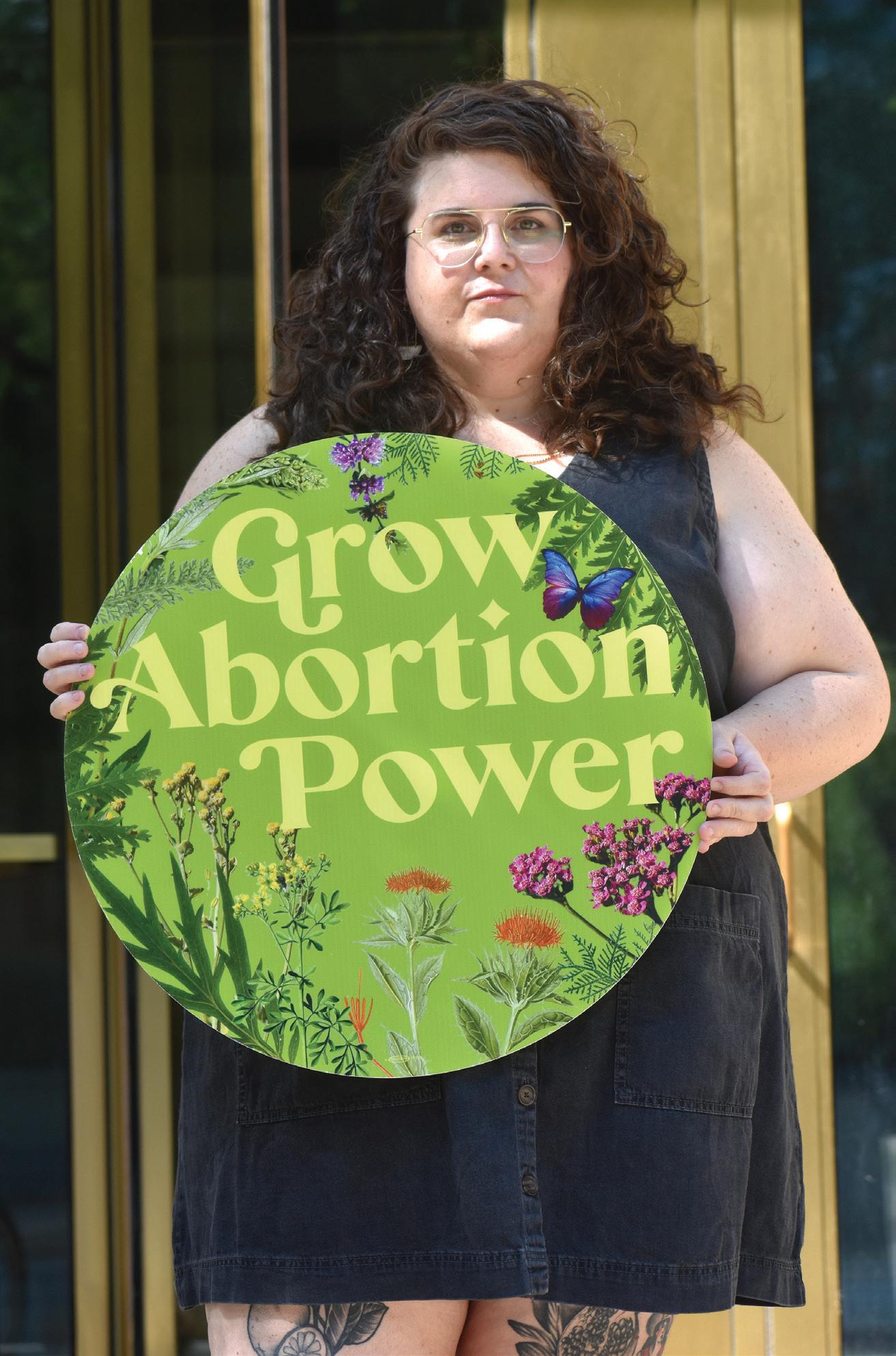
approach to HIV care and public health for the LGBTQ+ community. Today, Palmer is the program manager for the Complex Abortion Regional Line for Access (CARLA), which was launched in 2023 in response to the 2022 Supreme Court decision in Dobbs v. Jackson Women’s Health Organization . The ruling overturned 1973’s Roe v. Wade and eliminated the constitutional right to an abortion. In its wake, Illinois became a hub for those seeking out-of-state abortion care. CARLA—a collaboration between Chicago Abortion Fund and four local hospitals—utilizes a nurse-staffed referral line to streamline access and care coordination for those requiring hospital-based abortions due to significant medical concerns. As of press time, they’ve provided patient navigation services and resources for more than one thousand clients from 24 states. For more information, visit carlaprogram.org.
Interview by JAMIE LUDWIG
Photos by Kirk Williamson
Igrew up in a working-class community, and I came out as queer when I was 16. Being queer made me look at life through a different lens. It made me more curious, and see inequalities—systems and structures that aren’t set up for everyone—from a really early age. That changed how I saw healthcare access. I went to college thinking I’d work in public policy. Then I was offered an internship doing community outreach for George Tiller, an abortion provider in Wichita, Kansas.
At the time, [Tiller] was one of a handful of providers who specialized in later care. He led with love and compassion. He knew that every patient was an expert in their own life. Seeing a medical provider approach health care in that way was transformative; even outside of abortion care, seeing a doctor who trusted patients was incredible. It was radical. Being able to spend time in his clinic changed me. I knew I wanted to continue working in a field that trusted patients.
A er college, I worked at an independent clinic in the Detroit area. Around that time, my friends started having babies, and they asked me to be their support person during their deliveries. I realized that the support I was offering them was the same type of support I offered to patients during their abortions.
When someone is pregnant, whether they want or don’t want to continue the pregnancy, they [make their decision] for a wide variety of reasons: They can be structural reasons, life reasons, or health conditions and concerns where they realize that it’s not safe for them to continue a pregnancy.
Abortion is not a political act. People that end up having abortions aren’t thinking about politics. Politicians make it political, but for people doing it, it is an act of love for themselves, for their children, for their future children, and for their community. They know what’s best for them and their situation. That doesn’t mean that it’s always an easy or straightforward decision. O entimes, the barriers that come with accessing abortion care create more stigma and stress than the actual decision.
The word “doula” wasn’t as common [in the early aughts] as it is now. But I started to do more research, and I became a certified birth doula through a nation-

al organization. At that time, it was really fragmented: I could work in an abortion clinic and provide support. I could provide support to people that were pregnant and wanting to continue the pregnancy. But there was no connection between the two. Over time, I was able to combine those worlds and become what’s now called a full-spectrum doula, which means I can provide support and advocate for people regardless of the pregnancy outcome. That includes providing support for someone experiencing a miscarriage, or just helping to demystify and remove barriers that come along with pregnancy.
I moved to Chicago [in 2010]. By circumstance, I met an abortion provider in the city who was looking to expand support for patients in her clinic. She and I and another doula created the Chicago Doula Circle, [which] provided doula support for people having abortions at a hospital in the area.
[Doulas] focus on what the patient needs and meeting them where they’re at. They’re able to hold their hands, talk with them, explain the procedure and next steps, and validate whatever they’re feeling in the moment. That way the provider can focus on their part of the procedure and the patient [feels] like they have an advocate in the space—not to say that the other staff aren’t also advocates.
[A er Chicago Doula Circle disbanded], I took a step back to figure out how I could provide compassionate advocacy in a different way. I ended up working in the HIV world at Cook County Hospital, providing HIV education to patients in the emergency department using the same model of care: meeting the patients where they were at, letting them set the tone, and not going in with expectations about how they’d react.
A er a few years, I went back to school at UIC for my master’s in public health. I knew I didn’t want to go into politics or policymaking—I wanted to have a direct impact in hospitals or at a clinic level. When Dobbs happened, it was, unfortunately, not a surprise, but something a lot of providers and advocates within the abortion-care community had been planning for and worried about for many years as we saw access being chipped away

in different states. Immediately a er, Illinois experienced a surge in patients from around the country seeking care. Now, one in four people traveling for abortion care come to Illinois. I’m incredibly proud of the work that Illinois has done to create a landscape of increasing access and more health care in general. We’ve really scaled up. One way we responded to the Supreme Court decision was through the creation of CARLA, which helps reduce barriers for patients who aren’t able to be seen in a freestanding clinic, such as a Planned Parenthood. Complex care means a patient requires an abortion in a hospital setting. A er Dobbs , the number of hospitals around the country that could provide that care has been



“People that end up having abortions aren’t thinking about politics. Politicians make it political.”







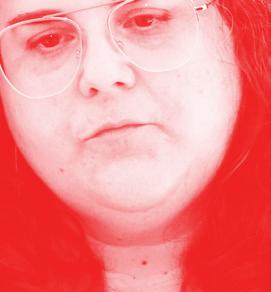




reduced.
States that have limited access to abortion care o en also have had cuts to Medicaid, so patients o en face limited access to routine medical care. Some may not understand they have a chronic health condition until they’re at an appointment for their abortion. [That could include] patients who have cardiac conditions, uncontrolled diabetes, thyroid concerns, or
patients who’ve previously experienced a stroke. It can include patients of any age.
As the scale and complexity of the abortion care landscape in Illinois has expanded greatly, the time-sensitive nature of providing care is heightened. The goal of CARLA is to work on the patient’s timeline and provide the most streamlined experience possible. It’s a really unique program, because we’re
combining the medical expertise of the hospital system with the patient navigation and support expertise of the Chicago Abortion Fund.
As I’ve gotten older, I [no longer] think that this work is radical. I’ve gotten more confident that all I’m doing is making sure people have access to the health care that they need and deserve, and that should not be a radical act. . . . To flip that script and say, “This is not radical—it’s just health care,” I identify with that more now than I do with the idea of working against the system. I’m trying to work within the system to make sure that patients have the care they need and improve the systems that we’re all currently navigating.
I was reflecting on all of this and why I do the work I do. One thing is that I am a queer single parent. That’s made me a much stronger advocate for abortion and for making sure access to health care is available for everyone. Our country fails to support parents and families, and anybody that enters parenthood should be able to enter it with the support, the readiness, and the full autonomy that they deserve. To me, that’s so important. It’s something I’m really proud of—the fact that I’m doing this now because I am a parent. v
m jludwig@chicagoreader.com


Dominick Alesia, 29, has been a member of the Impostors Theatre Company since 2019, when he joined as an actor. But Alesia has really come into his own as the company’s resident composer and librettist. In his 2023 musical Miranda: A War-Torn Fable , Alesia crafted a dystopian fantasy world about two sisters finding their way back to each other in the aftermath of a conflagration. Female bonding and fantasy also infused his enchanting Helena & Hermia in the Enamored Odyssey earlier this year, which drew upon Shakespeare’s A Midsummer Night’s Dream to create a thoughtfully feminist and often hilarious investigation into what we’ll do for love.
Alesia has also composed music for other Impostors shows, including Ryan

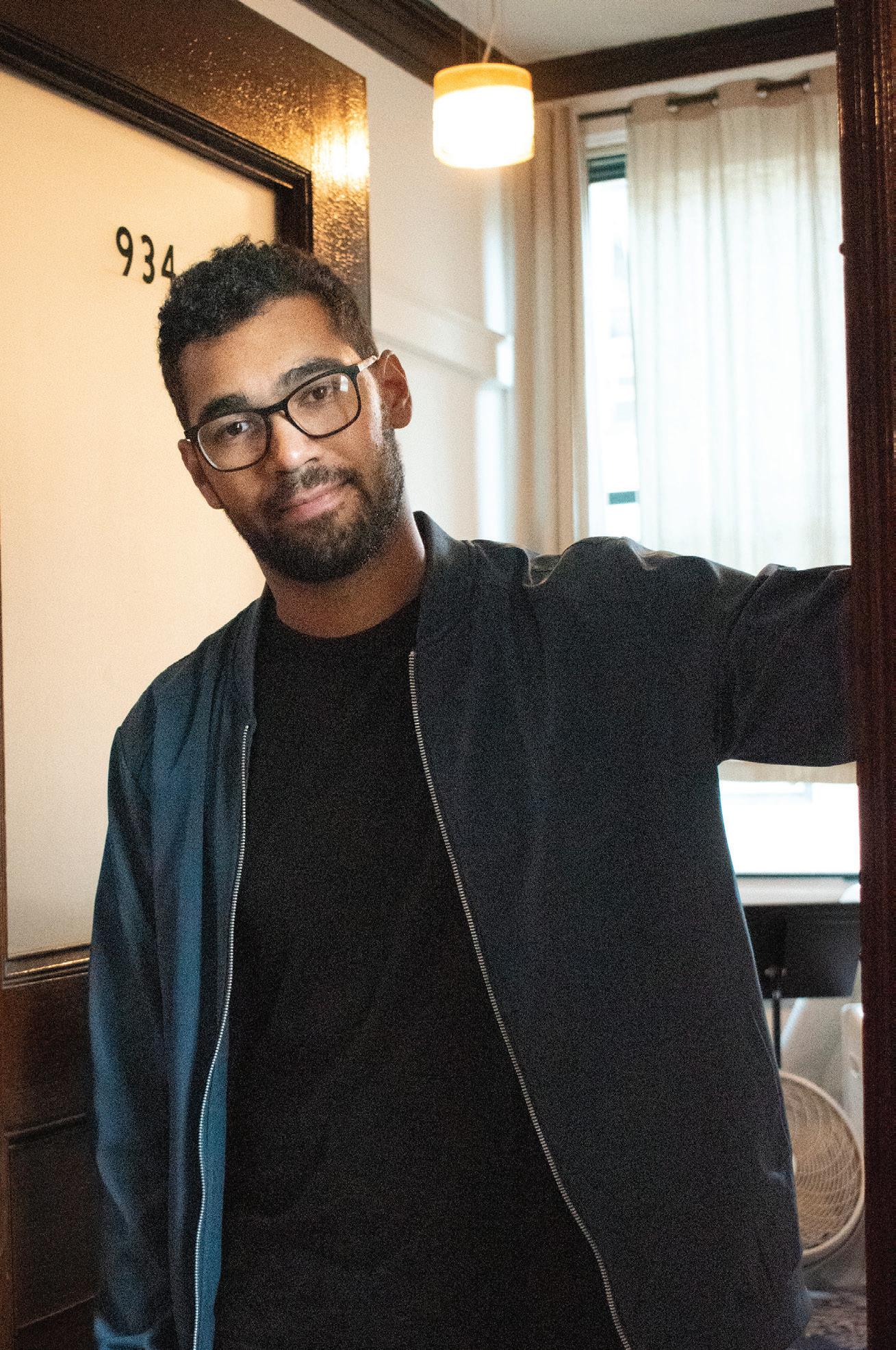
Stevens’s 2023 allegorical western, The Last Living Gun , and Emma Smart’s final-girl take on a traditional folk tale, 2021’s The House of Baba Yaga. His music for Rachel Borgos’s Hertha Nova in 2022 and Kayla Belec’s 2024 real-life-inspired tale of Great Lakes’ lighthouse keepers, Pilot Island & Her Keepers , scored him Non-Equity Jeff Award nominations. Alesia’s music contains allusions to Gilbert & Sullivan-style operetta, folk, pop, rock—and especially his greatest influence, Stephen Sondheim. His wife, Anna Roemer, who played Helena, is also an ensemble member and choreographer with the Impostors. Alesia is currently working on recording the score for Helena & Hermia so he can send it to other theaters around the country for possible productions.
Interview by KERRY REID
Photos by Kirk Williamson
Iwas born in Oak Park, Illinois, in 1996, at 4:45 in the morning. So an early riser. Theater was a pretty late discovery for me, I’d say. I had friends who had done theater all throughout elementary and middle school, but I had no part of theater until high school. It was sophomore year. There were mandatory electives that we had to take. And I think on a whim I just signed up for an acting class.
At first I was like, “Really?” Because it was just a new experience. I had never really done anything like it. And I was nervous and just frightened to death. Then I went there and it was seriously the best 45 minutes I had experienced in school up until that point. It was amazing, like, “I want to be involved in this, and I don’t wanna do anything else.” For the rest of high school, I did some acting in plays and musicals.
How I got into writing is a bit of a different story. We were in English class and we were talking about characters that are motivated by revenge. The English teacher mentioned names, nonfictional and fictitious, of characters whose story arc was motivated by revenge. He mentioned Sweeney Todd. And I was like, “Who is that? I’ve never heard of that before.” And then I stuck around a er class and kind of talked to him about it, and he pretty much told me the story of the [Sondheim] musical and played me some of the music. I was really transcended and taken aback by the plot of that show and just how dark and how intense it was. And then I just heard this beautiful music. I was really struck by the juxtaposition of the music and the context. And it really, really struck a chord in me like nothing else ever had before that point. I skipped my next class and went down to our auditorium, which was vacant at the time, and just started tinkering around on that piano and decided, “I want to try to write musicals.”
I started playing guitar when I was 11. I was writing songs on guitar, but nothing that really had any weight or meaning to it or anything. It just wasn’t good, I’ll say. I had no sort of technical music experience. I learned everything kind of backwards, where I taught myself basic piano fi rst and then
learned music theory through choir class and piano lessons a er that. I kind of had to unlearn everything and then relearn it the correct way: how to read music and how to write music and the theory of everything.
So then I went to Roosevelt University, and I was the first student to write an original musical and put it up in their theater space there. I had been working on a show and I begged the faculty there. We found an off night, and I got some friends together and rehearsed it for a couple weeks and put it up. It was called If Seasons Change. It was kind of like a stylized stage reading, but sort of the fi rst mature work of art that I put out there.
I saw a posting for an audition for a play that one of the Impostor ensemble members, Kayla Belec [she’s also the wife of artistic director Stefan Roseen], had written, called Tippy: Stories From the River . I had an amazing time working with the company, and they quickly became dear friends of mine. The fi rst show that I did music for was their production of Summer and Smoke by Tennessee Williams, which actually was the first nonoriginal piece that the Impostors attempted to do. It didn’t work out because of COVID. I think we got one performance.

[The Impostors] asked me to be a permanent ensemble member. And I’ve been their resident composer ever since, writing music for all of their plays. Sometimes [I’m] in the plays and doing live music, sometimes just creating studio music for underscoring and musical moments and stuff like that. The second show that I wrote music for, which was the first show a er COVID, was Hertha Nova, which was written by Rachel Borgo, another ensemble member. That, I think, is the show where I really stretched myself and found out what I really could do with underscoring for live theater.

“Growing up, I was always fascinated by stories that seemed kind of otherworldly.”


Miranda was my first full-length musical for the Impostors where I’d written the book and lyrics. Growing up, I was always fascinated by stories that seemed kind of otherworldly. I was never really into realism. I think there are some realistic forms in media or films that are really cool, but as a writer, I never found interest in things that were rooted in realism. I was always just really interested in absurdist theater and abstract theater and heightened storytelling with fantastical elements.
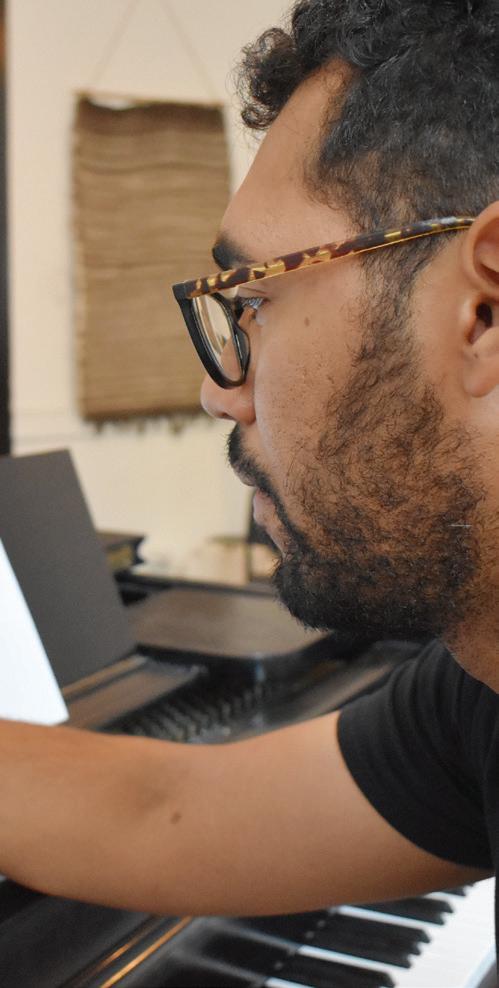
Most of my work is with the Impostors. I have scored a movie that I was actually in called Last Testament (2021) that was directed and written by Anthony Catalano. He had heard that I was also a composer and let me score for that film, which is awesome. My wife, Anna, works with a company called Music House, which is a children’s theater and art company based in Chicago. They asked me to score a Peter Pan musical for their kids to perform, which was great, because it was really fun to write for that age. That experience was a little bit different, because there’s the line of trying to find things that are not too complicated for kids to sing, but also making it really interesting and giving them opportunities to learn techniques they might not otherwise have learned about.
Anna and I are inspired by a lot of the same things, and we’re really creatively compatible. We work a lot on the same shows, where I’ll do music and she’ll choreograph, and it’s a lot of just, like, constantly, day and night, bouncing ideas off of each other, trying things. I’ll sometimes ask her to sing stuff, and she’ll sometimes ask me to try out some partner choreography.
There are definitely a lot of big inspirations for me. The biggest one is Stephen Sondheim. I was lucky enough to exchange a couple letters with him when he was alive, which was really, really beautiful. He wrote to me a little bit. It was a lot of just gentle encouragement and stuff like that. I also am a huge fan of Brian Wilson—rest in peace. Claude Debussy, George Gershwin, Cole Porter, you know, a lot of the early- to mid-1900s composers. For modern stuff, I’m a huge fan of Fleet Foxes. The singer, Robin Pecknold—I love the way that he composes and thinks about chord structures and harmony and stuff like that. And then I love a lot of jazz too. Thelonious Monk has always been a huge inspiration of mine too. I love the way he thinks about harmony in his approach to the [piano].
Helena & Hermia , I wanted it to have the duality of the possibility of being performed in a small, intimate black box or in a big space, with a larger pit and everything like that. I just tried not to really censor myself. I tried to just be creative and write what I would wanna see if I were to go see a new musical adaptation of a Shakespeare play. I’m really proud of the score. It was fun to write and not withhold myself from using time signatures. Just writing things that were really complex, rhythm- and rangewise, and kind of just be like, “We’re gonna try it.” It’s so far the peak for me. It’s the show that I’m most proud of. v
m kreid@chicagoreader.com














Nat Palmer, 24, is a community organizer who grew up in the near west suburbs and resides in Austin.
When asked what she’s working on right now, Palmer spends five minutes detailing a half dozen initiatives, including the Public Health and Safety Coalition’s budget campaign targeting unused police funds, the Babies Over Billionaires push for a corporate head tax, and the Free2Move Coalition’s fight against pretextual traffic stops. They text a er the interview that they forgot to mention the Uptown-based Liberate Ward 46 and Peace in Pilsen.
It’s clear Palmer does a lot. But she’s the first to tell you that community organizing is less something you do and more who you are. Palmer was building community
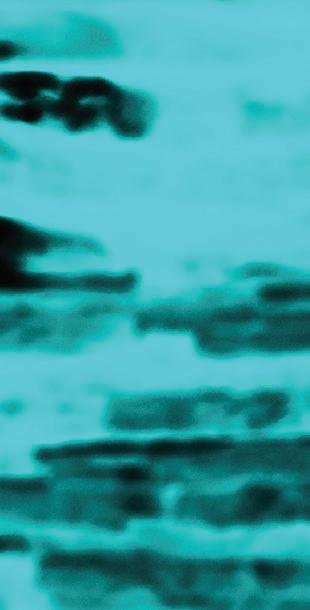
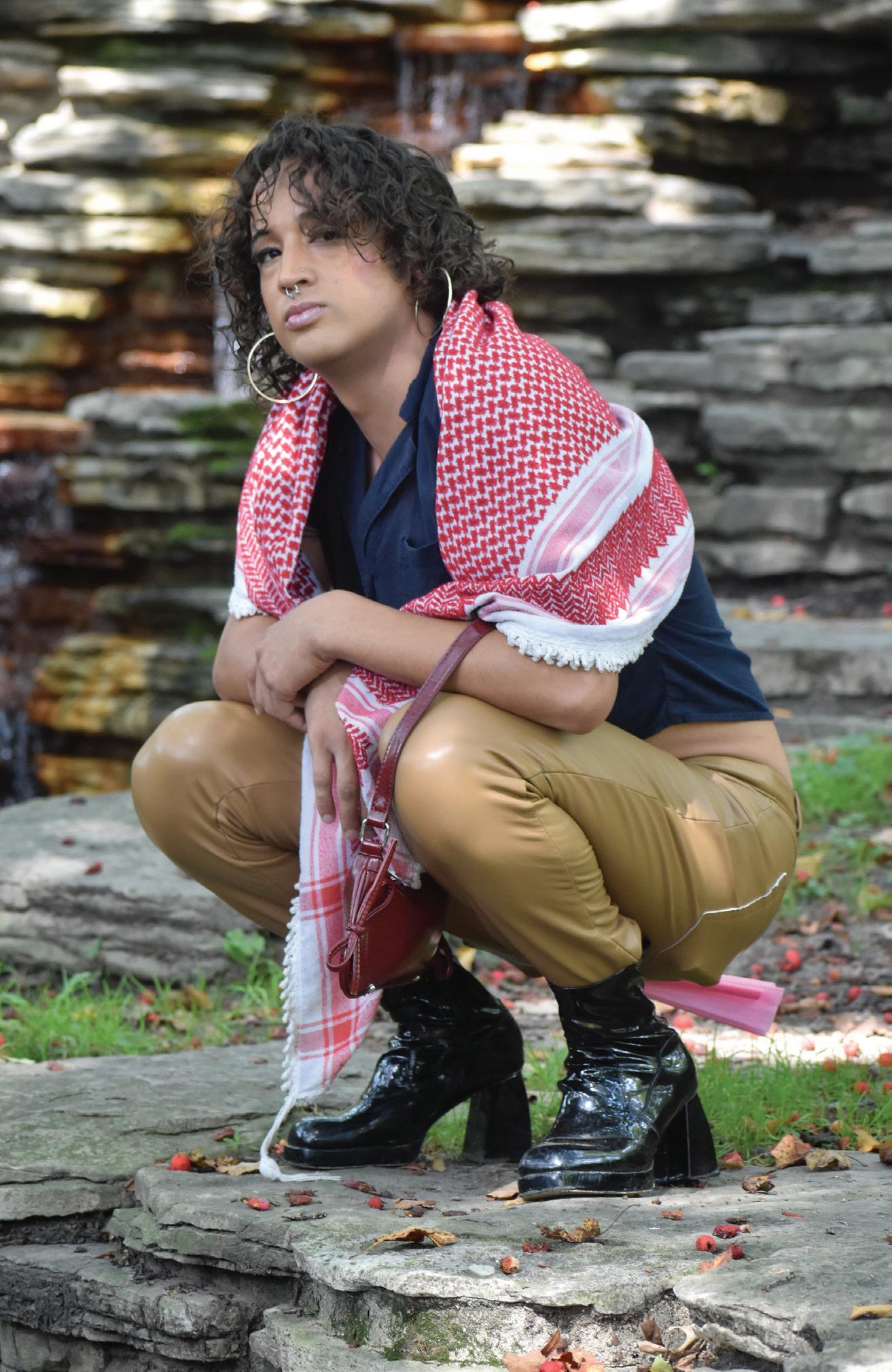
long before 2020, when, as a student at Western Illinois University, they and some friends formed History Never Taught, an organization focused on mutual aid and political education during the COVID-19 pandemic and, later, nationwide uprisings against police violence.
Palmer is active with the Chicago chapter of the Black Youth Project 100 (BYP100). They work to expand investment in community-focused public health with the Treatment Not Trauma campaign. She and other members of the #StopShotSpotter campaign helped successfully pressure the city into canceling its contract for the so-called gunshot detection technology. Palmer’s antisurveillance work continues as organizing lead at Lucy Parsons Labs.
Interview by SHAWN MULCAHY
Photos by Kirk Williamson
Iam a Black trans woman. I’m also mixed. I smoke a lot of weed. I listen to music—like, a lot of music. Just try to consume as much as I can. I ride my bike a lot, too. I love riding over to the Salt Creek Trail over in North Riverside—it’s this long-ass trail in the burbs—and just riding around the city.
I work for Lucy Parsons Labs, an anti-surveillance organization that focuses on trying to not just expose the relationship between companies, police, and the government but also create real public safety that isn’t through those things, because those things suck, dude. They suck.
I’m also a member of Black Youth Project 100 (BYP100), specifically the Chicago chapter. It’s an abolitionist, socialist organization with an explicitly Black, queer, feminist lens, which means we center the most marginalized, who we understand to be Black and queer people, specifically Black and queer working-class people. Those identities also encapsulate, in my opinion, disabled folks, Indigenous folks, folks without parents, folks who are unhoused. Especially Black people—Black queer people—we’re everything. We’re literally a part of everything, and we are always going to feel the shit first.
My dad wasn’t a self-described le ist; my mom wasn’t either. My dad is a public defender because he wants to help Black people—not just because it’s a job, but because that’s where he fights. So, I’m always fighting too.
Kwame Ture said, if you know there’s an issue and you are not doing something about it, you are now a part of the issue. So it’s like, that’s what I’m gonna do. All this organizing shit is cool, but, you know, it’s really about building community and centering people in that. So, it’s not just about my analysis of politics. When I walk down the street, I’m gonna say hi to my people. I know my neighbors; I help my neighbors.
I got into [community organizing] just because I fucking did it. You feel me? Then I just kept doing shit. I understand being in despair and overwhelmed. But like, bro, I come from people
who have survived and thrived. I come from Black queer people. I come from working-class people. My people have always thrived and survived, and it’s because they just did it, and that’s what we got to do.
When 2020 hit, I was in my last year of college, and I put on a protest [against police violence] in North Riverside. I met up with other people, and then we started the organization History Never Taught, which focused on political education and mutual aid. I was figuring out how to organize and looking for deeper ways to shi systems. Mutual aid is important, but mutual aid without a political motive to redesign the system doesn’t matter, in my opinion.
I joined [the #StopShotSpotter campaign] because I showed up to an event. I stayed on the mailing list; I went to an orientation, and then I just kept showing up and doing shit. They were very inviting. It was a space where I could learn and develop these skills.
I’m an abolitionist because I want to overturn all of this shit, and I understand that we cannot give everyone food, give everyone housing, give everyone land, give everyone the ability to live healthily, if we are not rid of systems that prevent that shit. #StopShotSpotter seemed like a clear abolitionist-based demand. If you don’t look at it as a system, you’re only going to rebuild what is already here. Just asking to cancel one contract, OK, well, then let’s get a better gunshot detection service. OK, well, let’s just do cameras. All of these things only reentrench the reason that we’re against the ShotSpotter contract in the first place. It’s not reimagining the system. It’s automating the system of stop and frisk. It’s automating policing that is inherently harmful.
So, that’s why, as a reform measure, ShotSpotter doesn’t work. That’s why, as a reform measure, canceling the contract still got them a [request for proposals for other] gunshot detection services. That’s why you try to stay rooted in abolition. That’s why we demanded not just that the city cancel the

South Loop resident William Night Train Veeck traces his career in professional sports back to the age of five, when he’d help vendors selling sodas and hot dogs to Saint Paul Saints fans. Night Train grew up in a baseball business dynasty. His great-grandfather, William Sr., served as the Chicago Cubs’ president from 1919 to 1933. His grandfather, William “Wild Bill” Jr., owned the Chicago White Sox on two separate occasions—including during the infamous 1979 “Disco Demolition” promotion, which was cohosted by his son Mike, who happens to be Night Train’s father. After nearly a decade away from baseball, Mike relaunched his baseball career in the minors as team president of the Miracle in 1990—during his tenure, the team moved from Miami to Fort Myers,


Florida. Night Train was a little kid when his dad returned to baseball, and he got to experience the inner workings of the pros before joining the business side fulltime with the minor league RiverDogs in Charleston, South Carolina. He’s since worked for the White Sox and Australia’s Big Bash cricket league, and he helped launch the Chicago House soccer team in 2020. In 2024, Night Train, his father, and Bill Murray acquired a majority stake in Joliet’s minor league baseball team, the Slammers. Night Train works as the team’s executive vice president of sales and marketing, where he spearheaded an attempt to break the world record for most hot dogs dropped from a helicopter in an hour. (They missed the record by 24 dogs.)
Interview by LEOR GALIL
I’ve been in baseball and sports marketing my entire life. I don’t know if we’re still in the tradition phase—it might actually be baked in at this point—but [I’m] fourth generation in the business.
I think I started breaking a couple child labor laws at about five years old, and fell in love with it. Born in Florida, and moved all around with my family, ping-ponging back and forth with different teams. [I’m named after Richard] “Night Train” Lane, who used to play for the Detroit Lions. Great guy off the field, and he’s a Hall of Fame defensive back. I guess my dad didn’t want me to get picked last for any baseball teams, so you could say it worked. It’s made for an interesting ride; it made middle school a little weird, but past that, it’s something that people can’t forget. So, I’m glad for that part. My dad, I think he underestimated the amount of paperwork that would need to occur with a name like Night Train.
I started out in concessions. I was on the grounds crew for a time; I was in game day staff, promotions, marketing, ticket sales, box office—anything in a ballpark, you name it, I was doing it. I realized, “This is fun.” I got to just be so immersed in it that I really don’t know that I can identify the exact moment, but I know that when I was able to walk out of a stadium, or look into a stadium and see it full, and see people having fun, and being happy . . . I mean, we’re memory makers, at the end of the day, that’s what we do. Being able to create those for people is the best.
A er dressing up like a slice of pizza, or a palm tree, or in a wedding dress [for] a fake proposal, I transitioned over to the ticket sales side in Charleston. That was my first job out of college. Did a little bit of everything—it’s minor league baseball, so you wear a lot of hats. I was there for two years, and then started with the White Sox shortly a er that. Walking in there for the first time—because the last one of us to walk out of there was fired by his dad for blowing up some disco records—it meant a lot. It was really special. It allowed me to come back, contribute to an organization that I always had a special feeling for, and bring something of
my own to the table. I had some fun conversations. Shout out to Chef Roy [Rivas], who had been there for I think 40 years; he fed three generations of my family; [head groundskeeper] Roger Bossard was another one.
My dad, he loved it. He was always, “Open this box up with your own eyes and at your own risk.” It’s definitely a really cool path, but there’s a lot of work. It’s long nights and long days at the stadium. I think he wanted to make sure it’s what I really wanted. I worked for him for a time, and he really enjoyed that.
A friend of mine sent me a job description, and it was a lot of what I do—it was marketing, creating fan experiences, and a little bit of partnerships. I know just about every baseball team in the country, and when I saw “Melbourne” on there, I was thinking, like, “Melbourne, Florida?” It was Melbourne, Australia—that part wasn’t on there. The Big Bash League there was in its sixth year of existence at that point, and it was outdrawing Major League Baseball by about six hundred fans a game. It’s what I would call the youngest, most successful sporting league in the world. They were revitalizing the game of cricket that was experiencing a lot of the same things that Major League Baseball was. I wanted to go work at the league level, and then go work around a league that was starting to do some of the same things that minor league baseball was, and approach it in a different way, to get the next generation of fans. I didn’t know anything about cricket, I didn’t know anything about Australia—and there we were. It was a wonderful experience, and it gave me a few things to bring back to the American side.
We had a couple of options and offers to stick around there, and it was a really great experience, and I love that part of the world. My sister was sick—I wanted to come back and be with her, and the rest of my family, and help take care of her. So, came back and started up an independent soccer team, during COVID—which was a whole story in itself. I’ve never been happier to see three
“Hope is a practice. You gotta give yourself hope.”

contract but that they invest that money into the community. Abolition is making that connection between, no, we cannot build over here if we don’t get the resources from over there.
All of these systems connect. [Former president Joe] Biden did millions of deportations—that was when we needed to resist. The reason that [President Donald Trump is] able to do this is because we already had the systems in place for him to do this. It’s important to resist, but it’s important to analyze why he’s able to do these things, because that’ll lead you to the systems that we actually need to figure out how to get rid of.
Oak Park, for example, just canceled their contract with Flock, which is a license plate reader system. A lot of the reasons [for canceling the contract] came from exposing police sharing license plate data with Immigration and Customs Enforcement (ICE) and allowing for police officers in other states [to use license plate readers] for the purpose of tracking [people who’ve had] abortions.
what is going on. I think people also understand whether or not they benefit in some way from what’s going on. People know that the cops actually do something for them, even though they also know the cops can turn against them whenever. People realize it. It’s whether people want to actually do something about it. In certain moments like right now it’s easy to make that connection. It’s not always easy to make that connection.
There isn’t an easy answer to shi ing people’s minds. There is only showing up and continuing to build with people. A lot of people do not agree with me fully, but you build personal relationships with people that you respect enough to not only shi their minds but to be shifted by them. If you’re coming in like you know all this shit—no, you don’t have the answer just because you’re over here.
thousand fans show up to a game on night one, a er starting a team in your living room, backto-back with your partner in an apartment in Chicago.
About two years ago, [we] started looking at a few teams. My dad had actually been looking a little bit before that, and thought, “This might be an interesting one.” He and I had always wanted to work together again. January 1st of last year I hit the ground running with the Slammers. The last year and a half have gone by in a blink.

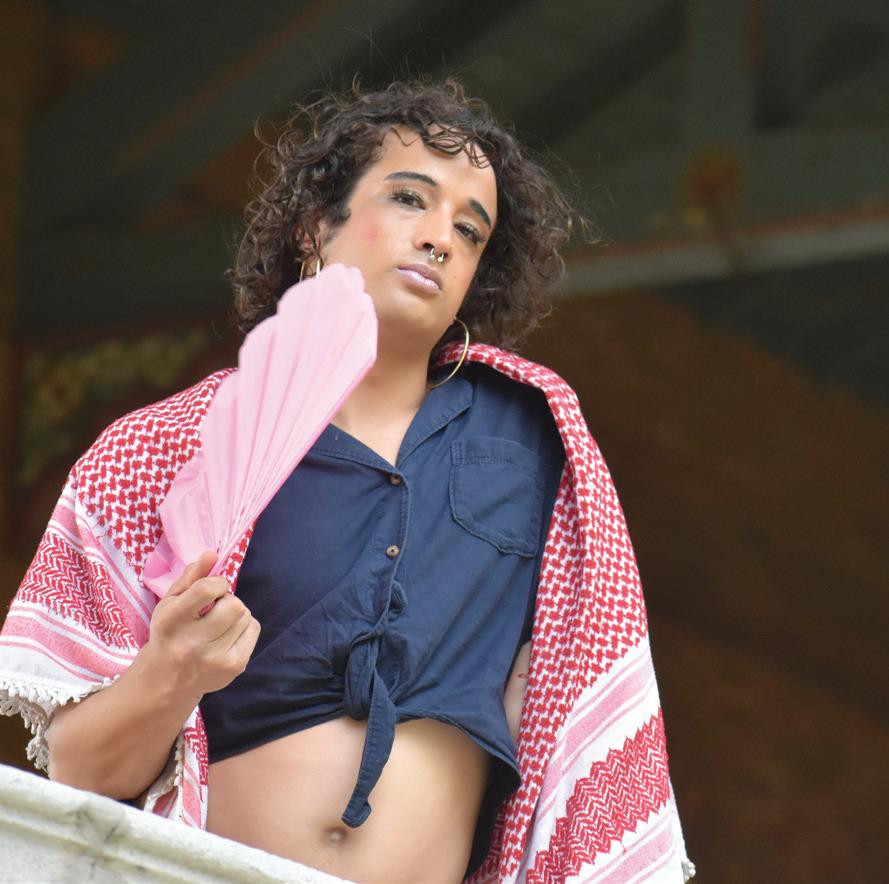
These concerns were raised in the past, so it’s like, no, they knew what was happening the whole time. If you look at the folks who live in Oak Park, they do benefit from people getting locked up, from Black people getting locked up. Calls to abolish ICE happened already. Democrats were not calling to abolish ICE for the last four years because they were benefiting from the deportations that were happening.
I think everyone has an understanding of
This shit is fucking hard and it’s horrible, but it’s also the most beautiful fucking thing you’re ever gonna see. The most beautiful things always exist, just like the most horrible things always exist. And you have to choose. You literally have to actively choose.
Hope is a practice, man. You gotta give yourself hope. Seek out people because we can’t do this shit alone. My people give me hope. The babies give me hope. Watching how people are not fucking with all this gives me hope.
The people are winning, and we will always win. v
Joliet, it’s a great town. It ticks the boxes. The personality, the spirit, the people here, the growth that’s happening—even in just the downtown Joliet area, the projects that are going on—it’s great. This is a town that really cares about their team. It’s also a town that doesn’t look at you too funny when you say you want to drop 2,600 hot dogs out of a helicopter.
I saw this very unceremonious picture of a guy in Detroit dropping these raw hot dogs out of a helicopter, and I just thought, “This is hilarious.” I asked a couple of people around, “What would you think if we did something like this?” Full credit to my staff here, they
were great. They came back and had all these other ideas to put it into action. One-hundred thirty-six degrees, that’s what you need a hot dog to be safely served at—and kept at temperature while it’s in the stadium and awaiting to go to the helipad. It was just over three-anda-half minutes from the helipad to the stadium. [Federal Aviation Administration] and the city shut down some city blocks. It was a really big production and undertaking, and we pulled it off. [I like] bringing more of that entertainment piece to the team. It’s always a welcome addition, and I think fans crave that—especially nowadays. Prices are going up, and you see that across the board, so keeping things affordable— young families being able to come out, not break the bank, and have a fun time. That’s the best. We have some fans, ten percent of them will come out with a score book, every single game, and keep perfect score—they have for years. But not everybody loves the game like that. Some people just want to come out and have a good time, and that’s what I want to bring more of, and continue to bring into the future. v
m lgalil@chicagoreader.com
“We’re memory makers, at the end of the day, that’s what we do.”

SHED THE SALT SHED THE SALT SHED THE SALT SHED THE SALT SHED THE SALT SHED SALT SHED THE SALT SHED THE SALT SHED THE SALT SHED THE SALT SHED THE SALT
THE SALT SHED THE SALT SHED THE SALT SHED THE SALT SHED THE SALT SHED
SHED THE SALT SHED THE SALT SHED THE SALT SHED THE SALT SHED THE SALT SHED
SALT SHED THE SALT SHED THE SALT SHED THE SALT SHED THE SALT SHED THE SALT THE SALT SHED THE SALT SHED THE SALT SHED THE SALT SHED THE SALT SHED SHED THE SALT SHED THE SALT SHED THE SALT SHED THE SALT SHED THE SALT SHED
SALT SHED THE SALT SHED THE SALT SHED THE SALT SHED THE SALT SHED THE SALT
THE SALT SHED THE SALT SHED THE SALT SHED THE SALT SHED THE SALT SHED
SHED THE SALT SHED THE SALT SHED THE SALT SHED THE SALT SHED THE SALT SHED
29
SALT SHED THE SALT SHED THE SALT SHED THE SALT SHED THE SALT SHED THE SALT
THE SALT SHED THE SALT SHED THE SALT SHED THE SALT SHED THE SALT SHED
SHED THE SALT SHED THE SALT SHED THE SALT SHED THE SALT SHED THE SALT SHED
SALT SHED THE SALT SHED THE SALT SHED THE SALT SHED THE SALT SHED THE SALT
THE SALT SHED THE SALT SHED THE SALT SHED THE SALT SHED THE SALT SHED
WITH THE HEAVY HEAVY AND THE DEAD BOLTS
SHED THE SALT SHED THE SALT SHED THE SALT SHED THE SALT SHED THE SALT SHED
SALT SHED THE SALT SHED THE SALT SHED THE SALT SHED THE SALT SHED THE SALT
THE SALT SHED THE SALT SHED THE SALT SHED THE SALT SHED THE SALT SHED

NOV 22 PORTUGAL. THE MAN ........................ THE SHED WITH LA LUZ NOV 23 THE BETHS ................................. THE SHED WITH SQUIRREL FLOWER AND PHOEBE RINGS NOV 28 WATERPARKS ............................... THE SHED WITH HEART ATTACK MAN AND WINONA FIGHTER DEC 1 OF MONSTERS AND MEN ..................... THE SHED DEC 3 BÉLA FLECK & THE FLECKTONES .............. THE SHED JINGLE ALL THE WAY
SALT SHED THE SALT SHED THE SALT SHED THE SALT SHED THE SALT SHED THE SALT THE SALT SHED THE SALT SHED THE SALT SHED THE SALT SHED THE SALT SHED
DEC 4 & 5 HOT MULLIGAN .............................. THE SHED WITH DRUG CHURCH, ARM’S LENGTH AND ANXIOUS
SHED THE SALT SHED THE SALT SHED THE SALT SHED THE SALT SHED THE SALT SHED
SALT SHED THE SALT SHED THE SALT SHED THE SALT SHED THE SALT SHED THE SALT THE SALT SHED THE SALT SHED THE SALT SHED THE SALT SHED THE SALT SHED SHED THE SALT SHED THE SALT SHED THE SALT SHED THE SALT SHED THE SALT SHED SALT SHED THE SALT SHED THE SALT SHED THE SALT SHED THE SALT SHED THE SALT THE SALT SHED THE SALT SHED THE SALT SHED THE SALT SHED THE SALT SHED SHED THE SALT SHED THE SALT SHED THE SALT SHED THE SALT SHED THE SALT SHED SALT SHED THE SALT SHED THE SALT SHED THE SALT SHED THE SALT SHED THE SALT ON SALE NOW

Tempestt Hazel is a curator and writer who cofounded the publishing platform
Sixty Inches From Center in 2010. Since then, Sixty has expanded from a Chicagofocused arts website to one that encompasses the midwest, with a focus on “the preservation of culture within Indigenous, diasporic, queer, and disability communities.” Sixty has run a slew of events in the past 15 years, largely aimed at promoting


and archiving cultural history. It has also transitioned to a worker-led organization that pays all its contributors.
Originally from Peoria, Hazel has been in Chicago for two decades. She serves as the facilitator of the University of Chicago’s 2025 Critic’s Table and is a 2025 recipient of the prestigious Rabkin Prize, which is awarded to arts writers for their creative and intellectual contributions.
Interview by KERRY CARDOZA
Photos by Kirk Williamson
Because I grew up in the 90s, I was attached to and obsessed with magazines. Those were just such important ways of understanding culture. I thought I would work at a print magazine, in the classic, very nostalgic sense of that publishing world. I also did a lot of sewing, so I would make my clothes or alter clothes.
I first got interested in art without even realizing that that’s exactly what I was interested in. There was a period I thought I would be a music video director. I always thought I would be on the artmaking side, whether it was fashion, video, or magazines.
I spent time working as a patternmaker and a samplemaker for designers. That was me exploring my fashion dream. When I moved to Chicago, I thought I would maybe continue that work; I moved in order to be closer to my family and to go to school.
There was a point where I realized that I wasn’t necessarily as interested in production as much as I was in support. Even when I was doing samplemaking and patternmaking, it was in support of other folks’ ideas. There was something about that role I really enjoyed.
But when I went to school—at Columbia—I ended up moving into art history. And art history programs—writing is such a big focus of it. I really struggled because I hated the way they were trying to teach us to write. It felt so antithetical to my relationship to art, but also my understanding of writing.
I almost abandoned writing because I felt very rejected by it. But I got back to it by understanding that I could do it my own way.
When you feel like a misfit, you still try to find spaces to land. At that time, I wasn’t feeling held by the art history track, which is more like curatorial, institutional, academic. I wasn’t feeling held by the arts journalism publishing world. I also wasn’t feeling very held by certain circles and communities within Chicago’s art worlds.
So Sixty was created to be a place for folks like myself and Nicolette [Caldwell], my other cofound-
er, to write the way we wanted to write. It gave us a space to be able to shout out the artists and the work that was reflective of us and that was really inspiring us.

The way that archiving came into the conversation [at Sixty] is—the root grievance that we had with our education was that it didn’t feel reflective of us, our communities, our interests. As art historians, it was very clear to us, when you ask the question of why the curriculum is the way that it is, the root cause is primary sources. It’s what’s being referenced. It’s what’s in the archive. It’s what’s informing the exhibitions, the curriculum, the books. What is valued, and that idea of the canon, is based off what is preserved and what is seen as worth preserving.
As Sixty was being developed, I was working at the Department of Cultural Affairs [and Special Events], helping to promote different events happening as part of Chicago Artists Month. An artist named Anne Hayden Stevens was going through the Chicago Artist [Files] at the Harold Washington Library—every single file in this 11,000-file repository. I went and met with her. That led to Sixty’s relationship with the libraries, then also the beginnings of our advocacy around archiving and legacy preservation.
The writing and the archiving piece have gone hand in hand for us. Over the years, we’ve evolved. The biggest evolutions have really been a reflection of who’s part of Sixty. We started off as a Chicago-over-everything organization. But Sixty is a bunch of people who are not from Chicago. We wanted to follow our own origin stories of the places we’re from.
That was 2016, when we really wrote midwest into our mission, asking questions like: What is midwest culture? It is a very complicated region. It’s hard to name it as one thing. We also wanted to think about what does slow relationship- and coalition-building across the region look like? Another one is really prioritizing and centering the people creating the culture. We’re thinking
about: What does preservation mean for the artists themselves, for the writers, the curators, the arts workers? And what could our role be in supporting that? Around 2018, ’19, we started shi ing Sixty’s internal operations to be more worker-led, distributed leadership. Right now, I’m elbow-deep in developing a creative benefits program for artists and arts workers. As someone who has spent a lot of time studying and being in community with restorative economies and folks doing Solidarity

Economy work, finding ways to integrate that more into Sixty has been the advocacy work that we’ve evolved into. So the three pieces of Sixty really are the editorial, the archiving, and the advocacy, and asking impossible questions in a time
of economic madness.
I’m also facilitating the Critic’s Table with the University of Chicago. Critic’s Table is not about writing. We come together to talk about the practice and what it means to be an arts writer. I think that’s exactly what I needed, because I have, very much so over the past few years, been in a listening season. I used to call it writer’s block. But it’s not that—I’m waiting for clarity on what I need to say. This is like the perfect hybrid of facilitation, teaching, and building a curriculum. It was almost like building the program that I wish I would have had.
My hopes for my future will be that when things start to flow outward, and especially as it brings in other people, that it feels deeply useful and is very much grounded in the wild reality we’re in. We’re gonna really have to be tapping into some deep, energetic reserves in order to fight and resist all of this shit.
Sixty is an organization that is really trying to battle the chronic issues of nonprofits, and burnout is one of them. We have to take care of ourselves. But we also have to push ourselves beyond our capacity. We have to sit with discomfort in a different way.
I’m trying to move in the world in a way that my younger self would be proud of and that would make it better for her. I’m looking at it from those eyes of trying to understand what my life would be if I would have known these
“I’m trying to move in the world in a way that my younger self would be proud of . . . “
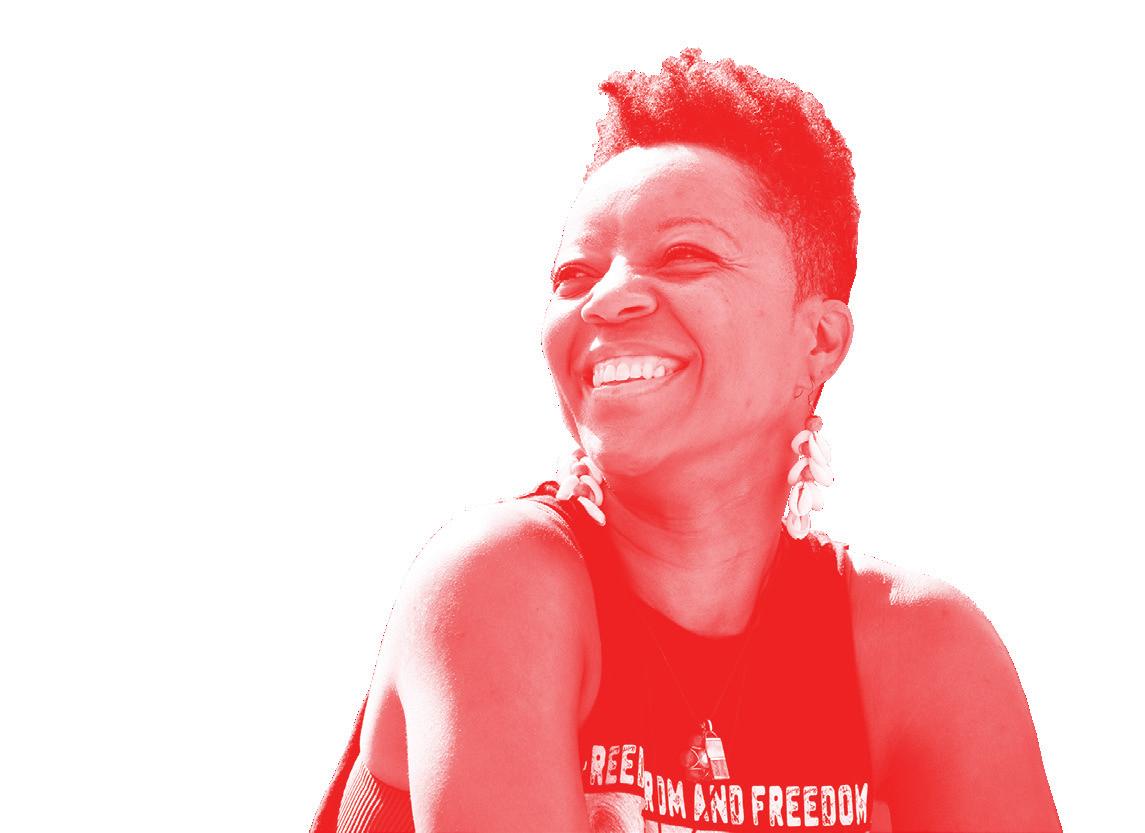
pieces of Black and queer history, or that school could take a different form and didn’t have to be so contentious, or that there are ways to move within these systems that challenge it and are very strategic and mindful, and don’t have to break you.
There are very clear efforts to kill our imagination and our imaginative spirit. I’d like to ask impossible questions and know that working in the arts is the best path for making the impossible possible. I really do think that it’s the way we survive.
I’m feeling very nourished by the space that I’m so fortunate to be in, like being a realist and understanding the world that we live in, but also giving myself license and putting myself in spaces where I can push and try and imagine something different. And not just imagine, but actually test it out and try to prototype. So I think, yeah, that’s why it’s all important to me; it’s teenage Tempestt looking at a Rolling Stone magazine, going, “Maybe?” v m kcardoza@chicagoreader.com
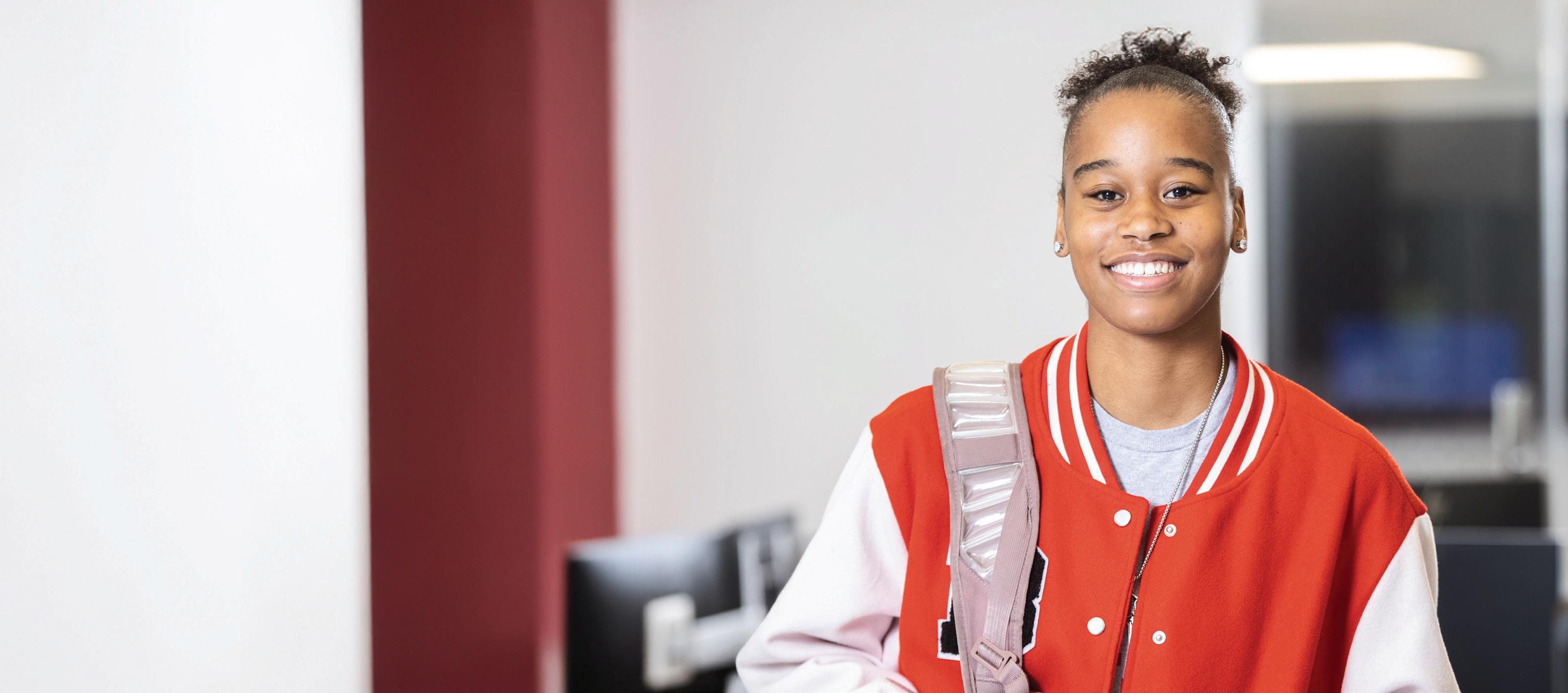
PICK OF THE WEEK
Recommended

NATURAL INFORMATION SOCIETY
Thu 11/20, 8:30 PM, Constellation, 3111 N. Western, $25.91. 18+
THE FIRST THING THAT WILL catch your eye at a Natural Information Society concert most likely won’t be the seated musicians but rather the woven banners that hang behind them at every show. These works of paint and cloth, made by NIS harmonium player Lisa Alvarado, combine vividly colorful psychedelic whorls and rigid geometrical patterns in ways that vibrate sympathetically with the group’s music. Bandleader, composer, guimbri player, and bassist Joshua Abrams synthesizes trance, dance, and minimalist traditions to create long, hypnotic pieces that explore the tension between fixed and changing elements. Abrams and Alvarado, who are married, cofounded Natural Information Society in 2010, but the ensemble’s boundaries are porous, with players coming, going, and sometimes returning. Several of NIS’s albums present the group in combination with outside musicians,
including English saxophonist Evan Parker on 2021’s Descension (Out of Our Constrictions); tenor saxophonist Ari Brown and a large, multigenerational band of Chicagoans called the Community Ensemble on 2023’s Since Time Is Gravity; and like-minded, synthesizer-oriented locals Bitchin Bajas on 2015’s Automaginary and 2025’s Totality. But the brand-new Perseverance Flow (Eremite) finally focuses on the quartet at the core of those records as well as nearly every concert the society have played for the past eight years: Abrams, Alvarado, bass clarinetist Jason Stein, and drummer Mikel Patrick Avery. Consisting of a single album-length composition (also called “Perseverance Flow”), it layers dubby flourishes, electronic distortions, and frenetic counterrhythms over recurring airy reed tones and a remorselessly insistent groove—it feels like a sonic realization of one of Alvarado’s banners. —BILL MEYER
THURSDAY20
Natural Information Society See Pick of the Week at le . 8:30 PM, Constellation, 3111 N. Western, $25.91. 18+
SATURDAY22
Glyders Axis: Sova and Numero Group DJs open. 9 PM, Empty Bottle, 1035 N. Western, $20.39. 21+
Chicago band Glyders make laid-back rock music— the kind that makes the perfect soundtrack for sunset drives down dusty roads with no destination in mind. Formed in 2014 by guitarist and vocalist Joshua Condon and bassist Eliza Weber, the trio meander among lo-fi indie rock, swamp rock, roots rock, psychedelia, and glam with a breezy attitude and charm they developed during years of building up their live chops in the city and beyond. Following a handful of tapes, EPs, and singles, Glyders released their debut full-length, Maria’s Hunt , in 2023 via Drag City imprint Country Thyme. Soon a er, following years of lineup changes, they connected with drummer Joe Seger, who became their fulltime third member.
Glyders recorded the brand-new Forever (Drag City), which they’re celebrating at this Empty Bottle show, mostly in their Humboldt Park home studio, and it feels intimate and deceptively chill. The rootsy “Moon Eyes” dri s on a tranquil cloud, and then “Stone Shadow” ramps up the energy with tight garage rock. Condon carries the haze of “Hard Ride” with a trippy guitar lead that sails over Weber and Seeger’s motorik groove. The power trio really dig in on the slow-burning “Steppin’ / Tell Me About the Rabbit,” where they build from a feisty bluesrock stomp into a swirling psychedelic beat, with the drums and guitar dueling till the song explodes into a satisfying boogie. Glyders bring the album in for a so landing on the understated closer, “Thousand Miles.”
—JAMIE LUDWIG
BrÌghde Chaimbeul Anna Johnson opens. 8:30 PM, Hideout, 1354 W. Wabansia, $28.65. 21+
For reasons involving a class trip and a large, passive-aggressive pipe band who expressed their displeasure about sharing space with a couple dozen rowdy students by staging sunrise practice sessions outside our windows, bagpipes haven’t always been music to my ears. Then I heard Brìghde Chaimbeul, who made me reconsider everything I thought I knew about the instrument and how it could be used in modern music.
Raised on the Isle of Skye off Scotland’s northwest coast, Chaimbeul is an experimental composer who grew up immersed in music, studying piano and fiddle before picking up the bagpipes at age seven. A native Gaelic speaker, in her teens she switched to her primary instrument, the Scottish smallpipes—a smaller, higher-pitched cousin of the better-known Highland bagpipes. She won acclaim
Find more music listings at chicagoreader.com/musicreviews
on the global folk scene and then, as her songwriting matured, from the avant-garde circuit. She merges drones and electronic textures with influences from Celtic, Bulgarian, Scandinavian, Cape Breton, and Irish bagpipe traditions. In recent years she’s played tastemaking festivals such as Big Ears in Tennessee, Le Guess Who? in the Netherlands, and Supersonic Festival in England.
Though Chaimbeul’s latest album, Sunwise (Tak:til), came out in June, it embraces winter. It combines original tracks and new arrangements of traditional songs that get at the cozy customs, togetherness, and storytelling that have carried people through the dark and cold since time immemorial. The meditative, nine-and-a-half- minute opener, “Dùsgadh/Waking,” is almost entirely a drone that slowly and deliberately becomes more layered and colorful—it feels like a morning walk through a cold, barren landscape as the sun gradually climbs the sky. “A’ Chailleach” (with reedist and recurring collaborator Colin Stetson) feels alluringly mysterious in its shimmering swirls and evocative textures, while “Kindle the Fire” is an ASMR-worthy blip of crackling flames and wind. On album closer “The Rain Is Wine and the Stones Are Cheese,” Chaimbeul and her brother, Eòsaph,
celebrate the longest night of the year and welcome new light with wordless vocalizations that recall the canntaireachd method—a centuries-old oral tradition used to preserve and teach bagpipe music before the development of written notation. It’s rare that an artist can make something ancient feel so new, and it’s fun to imagine a distant future when our descendants (provided the species hasn’t self- destructed) will be reinventing Chaimbeul’s music with a similar thoughtfulness and creativity.
—JAMIE LUDWIG
Pamela Z Chicago-based ensemble Mycelium New Music (conductor Justin Weiss, flutist Paul Novak, clarinetist Michael Tran, violinist Dylan Feldpausch, cellist Isidora Nojkovic, pianist Jonathan Hannau, and percussionist Rebecca McDaniel) opens the concert. Pamela Z performs solo and then appears as a special guest with Mycelium. 8:30 PM, Constellation, 3111 N. Western, $25.91, $20.72 students. 18+
Pamela Z’s career has been defined by the voice and how it can be a vessel for meaning, emotion, texture, sonority, and collaboration. Her 1988 debut album, Echolocation, serves up quirky pop songs and methodical sound poetry that showcase the potential of extended vocal techniques to be endlessly hypnotizing. Throughout her career, she’s sampled and looped voices, processed them with live electronics, and presented them in varying configurations via intimate concerts and multichannel installations. For Pamela Z, the voice’s infinitude is the point.
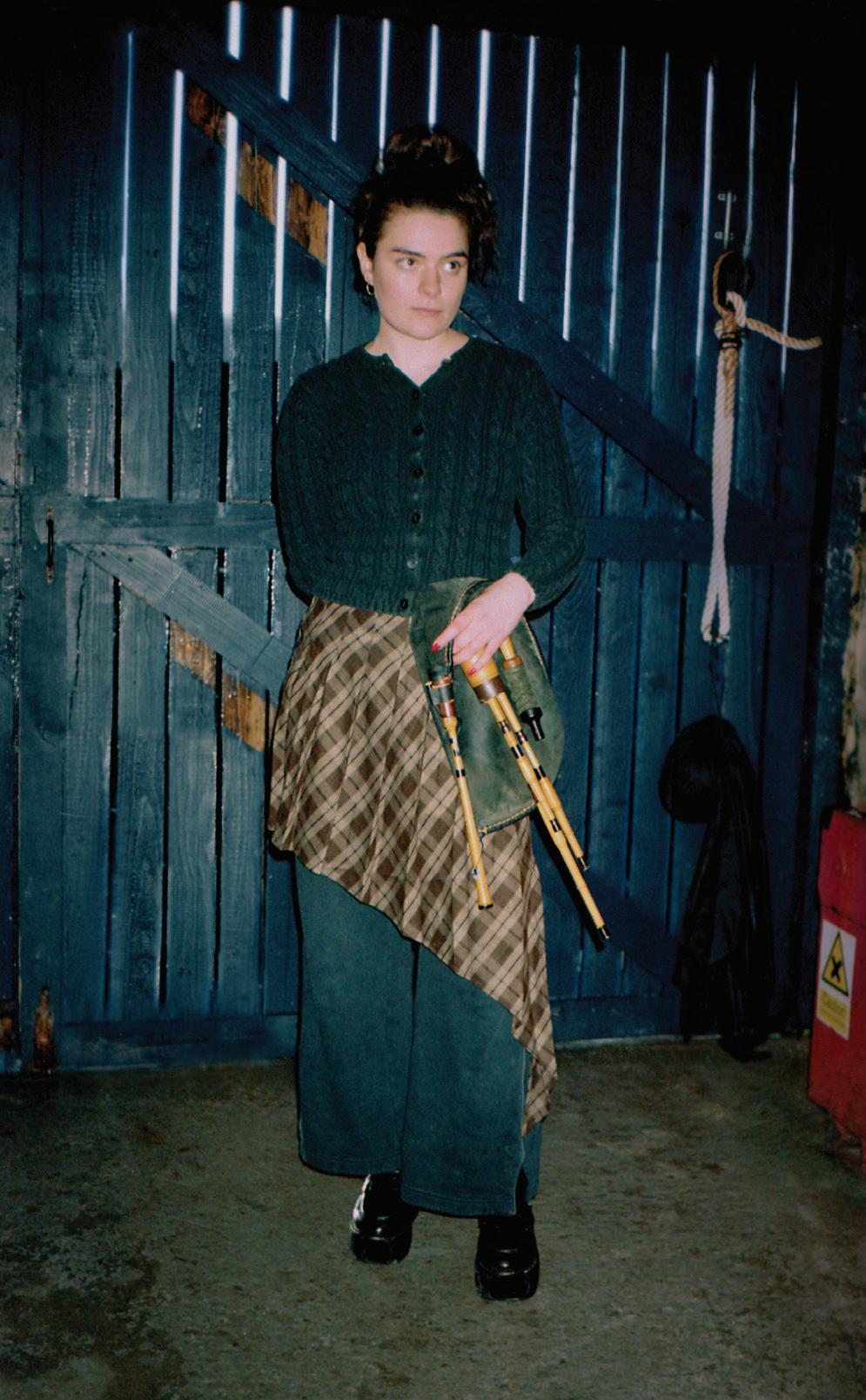

Her latest album, Simultaneous (released last month on Other Minds), presents this idea in a single long-form piece that’s one of her most exhilarating compositions to date. Across nearly 45 minutes, she arranges more than 30 interviews, which she began conducting during a 2019 fellowship in Rome, into a collage of layered utterances. The record was inspired by the idea of live interpretation, and as Z weaves together snippets from the interviews, she o en combines two or more people saying the same phrases in different languages. The track reveals other differences, giving hints at the participants’ ages and genders as well as each person’s personality and rhythm as they speak.
Z also throws in fascinating stories and phenomena that emerged during the interviews that relate to the idea of simultaneity. One woman shares about walking home while drunk and being approached

by a car full of men, and how her mother later told her she had dreamed about her at the exact time of those events. There’s a recounting of a study that details how pedestrians will eventually synchronize their steps. Another woman calls a childhood friend on the other side of the world and realizes the two are wearing the same flannel pajamas.
The stories of Simultaneous are interesting as sound, especially because Z arranges the voices so they waver between podcast-style intonations and operatic singing. And the personal accounts of coincidence are more than just amusing; they provide a way to think about the voice as granular material. Whispers sometimes seem to announce the minutiae of mouth sounds; a momentary echo effect highlights the drama of a wordless tone. More than anything, the draw is the specific qualities of everyone’s voice. Simultaneous makes it easy to appreciate speech in all that it signifies and all it can be. —JOSHUA
MINSOO KIM
WEDNESDAY26
Algernon Cadwallader Gladie and Walter Mitty & His Makeshi Orchestra open. 7:30 PM, Thalia Hall, 1807 S. Allport, $30.93, $336.47 six-seat opera box. 17+
This past May, PBS News aired a segment on the “largely forgotten history” of the Philadelphia police’s 1985 bombing of MOVE, a Black revolutionary organization headquartered in a residential row house. Four months later, fourth-wave emo luminaries Algernon Cadwallader released their first album in 14 years, Trying Not to Have a Thought (Saddle Creek), which climaxes in “Attn MOVE,” a retelling of that dark and shameful moment for the band’s hometown. Algernon helped make fourth-wave emo an exciting indie-rock movement in the 2010s, and though neither they nor any of their scenemates
2/26 Florist
3/7 Lúnasa 4/11 Loudon Wainwright / Chris Smither UPCOMING
SATURDAY, NOVEMBER 22 8PM Rodney Crowell In Maurer Hall with special guest The Secret Sisters
SATURDAY,

THURSDAY, DECEMBER 11 8PM
DECEMBER 12
The Aimee Mann & Ted Leo Christmas Show with Very Special Guests: Paul F. Tompkins, Nellie McKay & Josh Gondelman
The Mayfair Theatre at the Irish American Heritage Center • 4626 N Knox Ave
FRIDAY, DECEMBER 12 8PM Freedy Johnston & Walter Salas-Humara In Maurer Hall
FRIDAY, DECEMBER 19 7PM
SATURDAY, DECEMBER 20 2 PM, 5PM & 8PM Mariachi Herencia de México: A Mariachi Christmas In Maurer Hall
SUNDAY, DECEMBER 21 4:30PM
The Nut Tapper featuring Reggio "The Hoofer" McLaughlin In Maurer Hall

SATURDAY, FEBRUARY 7 8PM Jimmy Webb In Maurer Hall
have ever been stadium size (or had the reach of PBS News), everybody gets their history lessons from different places. Emo heads born after 9/11 love Algernon Cadwallader (most of them discovered the band a er they broke up in 2012), and it’s a pretty great outcome if any of them happens to learn about the MOVE bombing from the wounded croak of bassist-vocalist Peter Helmis. Guitarist Joe Reinhart slows down his whimsical cycling patterns when “Attn MOVE” needs room to breathe, but he also abandons that measured calm to erupt in scowling distortion, expressing the band’s contempt for a society built to allow bombing its own people and then sweeping it under the rug.
Throughout the album, Algernon Cadwallader grapple with problems on civilizational and individual scales: the roots of the American project in the dispossession and genocide of Indigenous people (“Shameless Faces”), for instance, or the hyperconnected world and its pressure-cooker demand
for #content that undermines making art for its own sake (“noitanitsarcorP”). Three years a er reuniting, Algernon sound irrepressibly vigorous, as though energized by the prospect of engaging anew with the world’s current problems—and I hope their fans take Trying Not to Have a Thought as an invitation to do the same. Tonight, the band headline Thalia Hall, in a neighborhood whose historically Latine population has been subjected to violence and terror at the hands of ICE and Border Patrol since the Trump regime began Operation Midway Blitz in September. When I went to Thalia to see Geese last month, I couldn’t escape the sound of helicopters circling low overhead on my walk to the venue. Chicagoans have done a great job of supporting neighbors targeted by this administration, and I don’t think Algernon will need to convince anyone in the crowd that this is the right thing to do. But even if you’re already confronting the Trump administration daily, it can give you extra energy to see a band energized by the same righteous fight. —LEOR GALIL v





Arthur “Joker”
Banks passed away last week. A veteran of the local hip-hop scene (he also went by “Artie McFly” ), Banks had cofounded streetwear store Jugrnaut in 2007. “He was definitely the life of the party,” says Jugrnaut co-owner Brian Nevado . “Every time he walked in—he just lit up a room, that’s for sure.”
Nevado met Banks in 1997, when both were students at the American Academy of Art downtown. They bonded over Marvel Comics, which influenced Banks’s artistic style, and a mutual love of hip-hop. “The Chicago hip-hop community was small—you were able to identify who was into hip-hop and the culture,” Nevado says. “All of us in school just gravitated towards each other.”
Around the same time, Banks met Sterling Price (aka Pugs Atomz ) at Gallery 37, where After School Matters hosted its arts education programs. The two of them hit it off while hanging out at the nearby Marshall Field’s. “We were both getting into Ralph Lauren clothing, Tommy Hilfiger,” Price says, “and that was the prime place to go get it.” Price recruited Banks into his hip-hop crew, Nacrobats, which at its peak claimed around 200 members, including Open Mike Eagle , Offwhyte, and Psalm One. Price and Banks started throwing parties together in ’97. “Me and him would throw everything from MC battles to hip-hop parties at Promontory Point, different lo spaces on 1900 South Michigan, even some spots that were more in central downtown, like, near Jackson and State,” Price says. He and Banks scouted spaces, split rental costs, and worked hard to promote their events—and Banks kept doing that kind of work for Price when his friend started releasing solo music in 1999. “He was definitely an ambassador,” Price says. In 2000, Banks’s promotional skills helped him land a job with Ch’rewd Marketing , whose clients included seemingly every major hip-hop label and artist. Banks’s work with these hip-hop heavies came in handy a few years later, when he and Nevado opened Jugrnaut in the Loop with brothers Manny and Roger Rodriguez . Nevado and the Rodriguez brothers had previously been in Nacrobats-affiliated rap group Lyric District. Nevado says Banks helped make the shop a focal point for people connected to Chicago hip-hop. “A crucial point was some of the in-stores—we got them through people that he worked for and that he was connected to
and knew,” Nevado says. “So everyone from Q-Tip from Tribe, Raekwon, Wiz Khalifa, and a slew of legends that we grew up listening to ended up doing meet and greets at the store.” Jugrnaut has maintained deep ties with the local hip-hop scene to this day—rapper and infl uencer Adamn Killa held a meet and greet there earlier this year.
In 2015, Banks launched his own clothing line, Cespool USA, whose name he also used to host pop-up events. Price remembers trading tips with him about managing his brand and throwing events. “[He was] always supportive,” Price says. “I’d look out in the crowd, he’s there.”
IN MARCH 2023, city officials shut down the original Washington Park location of housefocused dance-music venue the Post . Since then, the Post’s founder, DJ Sheldon Randolph , has thrown Post parties sporadically around town. On Sunday, September 28, Randolph hosted the first Post event at the New Celebrity Lounge (2020 E. 83rd St.), and he’s held several more there on subsequent Sundays. While the Post was entirely oriented around dancing, the New Celebrity Lounge allows for lounging too, as the name suggests. But Randolph says patrons who want an experience like the one offered by his old club—which hosted DJ sets by the likes of Theo Parrish, Glenn Underground, and Specter—will have no trouble finding it.
the year. Emily Jane Powers opens.
OKDEAZY MAY BE THE MOST prolific rapper in the #NewChicago movement; last month, he dropped his third full-length of the year, Blue , which emphasizes blown-out bass and his shrugged-off flow. On Thursday, November 20, he headlines a monster show at Subterranean with nine other acts, including scene standouts Cece Bke and Mike DFG

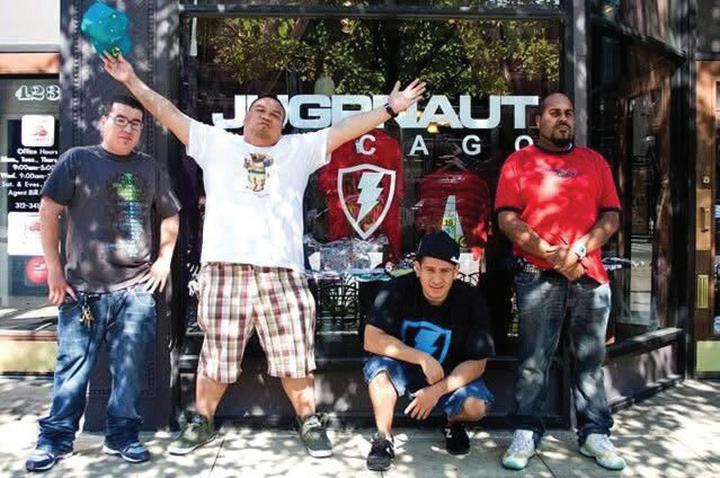
“The sound system is still the same,” Randolph says. “It’s still the system that you’re gonna feel in your bones. You’re gonna get treated correctly. It’s a nice neighborhood place, sort of like those north-side places.” Randolph is still looking for his own space, because he wants to throw underground disco and house events on Fridays and Saturdays, not just Sundays. But he’s been enjoying the freedom that the New Celebrity offers him—on Sunday, November 23, he plans to host an all-day Post event featuring Waxmaster. “No media, no computers,” Randolph says. “Back to basics.”
IN MARCH, ISABEL OLIVE’S alt- country project, Half Gringa, released a terrific album called Cosmovisión , and she’s still finding great material from those sessions. On Tuesday, November 18, she issued the B-side single “Nelly in a Dream,” which combines Olive’s supple vocals with crisscrossing synth lines. On Saturday, November 22, Half Gringa headline Schubas for their last full-band show of

YL Law Firm LLC has mult. openings avail.: Master’s only/Foreign equiv. acptd. Accountant (YFLA25): Examine, anlyze. & intrpt. Acc. records to prep. financial stmts. Mail resume with job ID to HR: 110 N. Wacker Dr., Ste. 2500, Chicago, IL 60606.
Logistic Coordinator: Monitor distr of goods at transp comp. Monitor daily activity. Manage performance of fleet, routing, scheduling. Keep track of deliveries. Manage vehicles. Inventory mgnt. Analyze & optimize logistical procedures. Ensure compl w/regs. 2 yrs’ exp as logistic coordinator or dispatcher. Res: Flexway LLC; 13 Willow Bridge Way, Unit 3, Bloomingdale IL 60108
Logistic Coordinator: Romeoville IL. Manage daily logistics ops. Monitor distribution of goods at transp comp. Lead logistics team. Coord customer service. Compliance to safety standards. Manage performance of fleet, routing and sched. Managing vehicles. HS. 2 years’ exp. Road Titans Inc; safety@road-titans.com
Morningstar, Inc. seeks Lead QA Automation Engineer (multiple positions) in Chicago, IL to thoroughly understand requirements of Indexes business, meaning & location of data used throughout system, backend workflows of platform, expected outputs of system, & correct usage of all user interfaces. BS deg in Electrical Engg, Electronics Engg, Comp Engg, Comp Sci, IT, or rltd field or foreign equiv &7 yrs of rlvt exp in software QA req’d. Add’l specific skills req’d. Base salary: $116,085-$120,000/year. For position details & to apply, visit: https://www. morningstar.com/careers; ref. job ID REQ-052977.

CHESTNUT
ORGANIZING AND CLEANING SERVICES: especially for people who need an organizing service because of depression, elderly, physical or mental challenges or other causes for your home’s clutter, disorganization, dysfunction, etc. We can organize for the downsizing of your current possessions to more easily move into a smaller home. With your help, we can help to organize your move. We can organize and clean for the deceased in lieu of having the bereaved needing to do the preparation to sell or rent the deceased’s home. We are absolutely not judgmental; we’ve seen and done “worse” than your job assignment. With your help, can we please help you? Chestnut Cleaning Service: 312-332-5575. www. ChestnutCleaning.com
Speaking of Subterranean, the Wicker Park venue hosts a farewell concert for downstate cybergrind standard-bearers Thotcrime on Saturday, November 22. Blind Equation, Anita Velveeta, and Cocojoey open.
CHICAGO INDIE-ROCK GROUP Santah called it a day in 2017, but earlier this month they released an album they recorded last summer called Last Whirlpool . On Tuesday, November 25, the band (which features Vivian McConnell , aka V.V. Lightbody , and her brother Stan) play the third of three reunion shows to mark the occasion, this one at the Empty Bottle . Opening for Santah are long-dormant indie-rock four-piece Marrow, whose lineup includes Liam Kazar (who just dropped the solo album Pilot Light) and Macie Stewart —LEOR GALIL
Got a tip? Email your Chicago music news to gossipwolf@chicagoreader.com.

